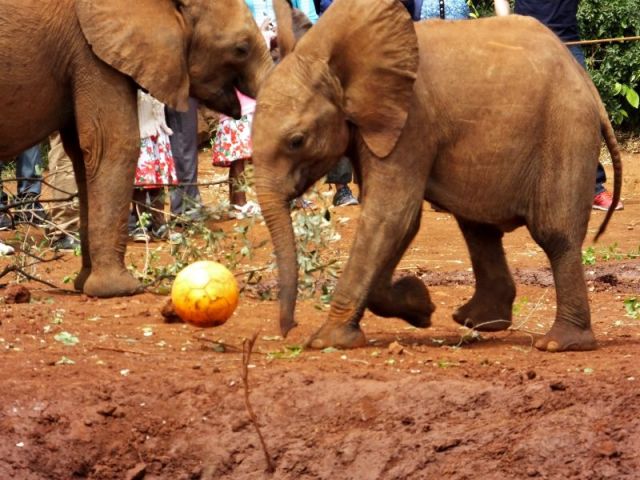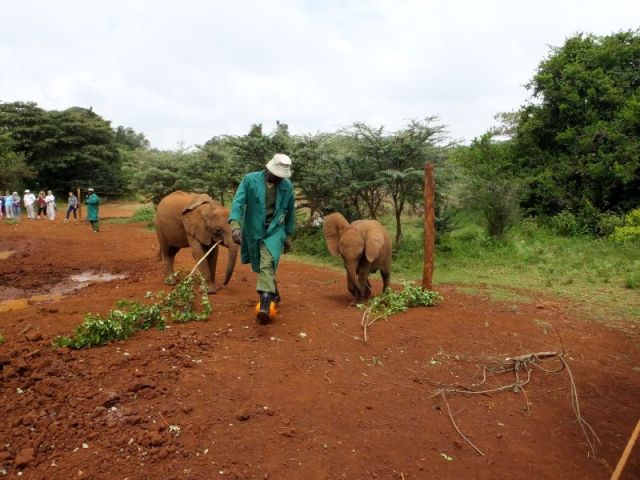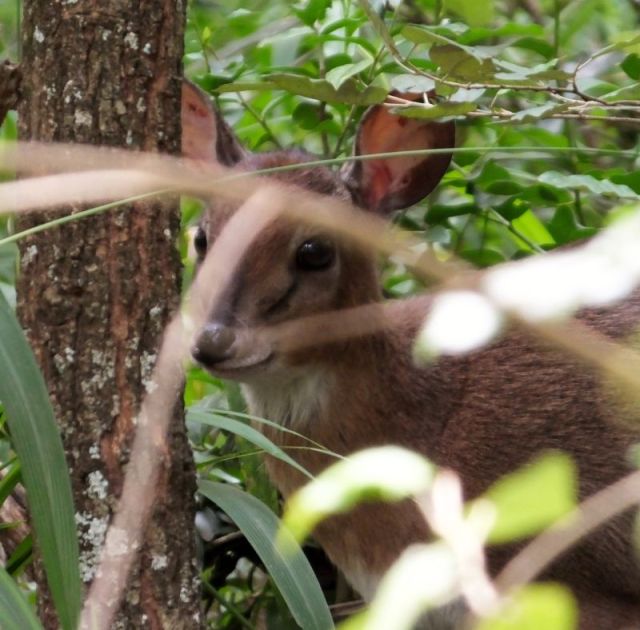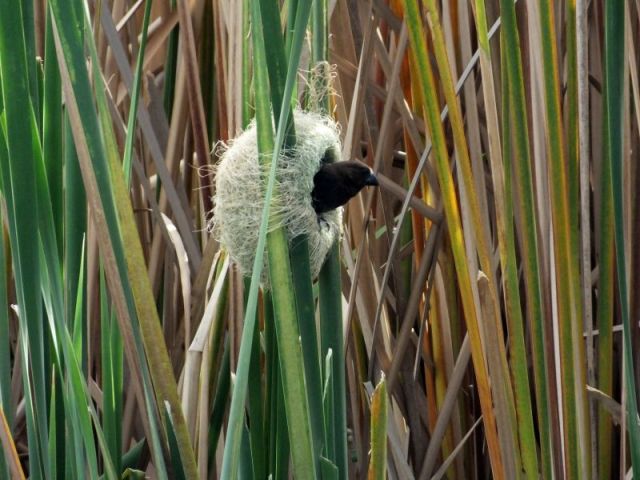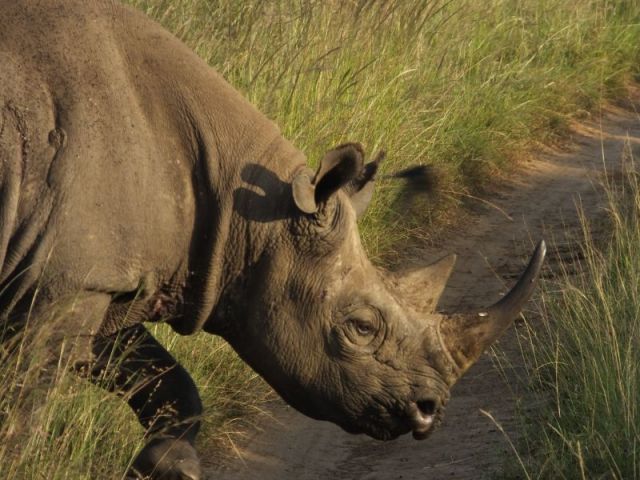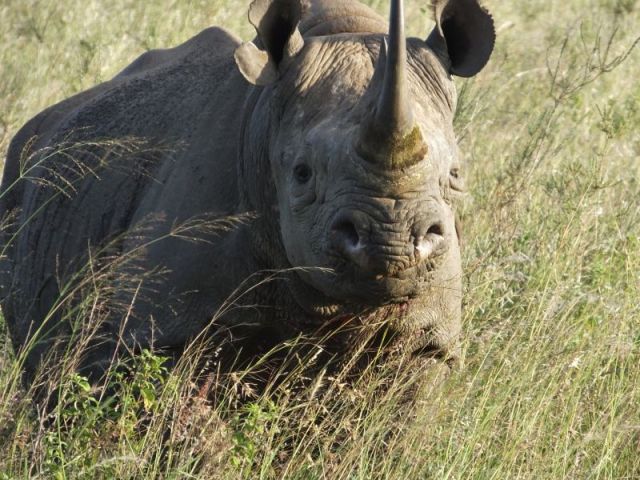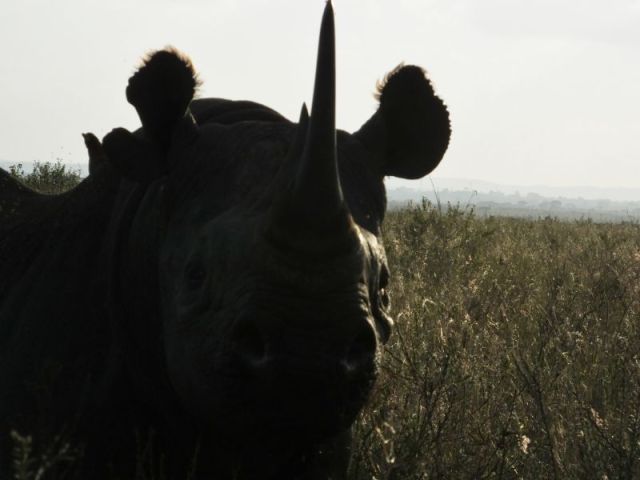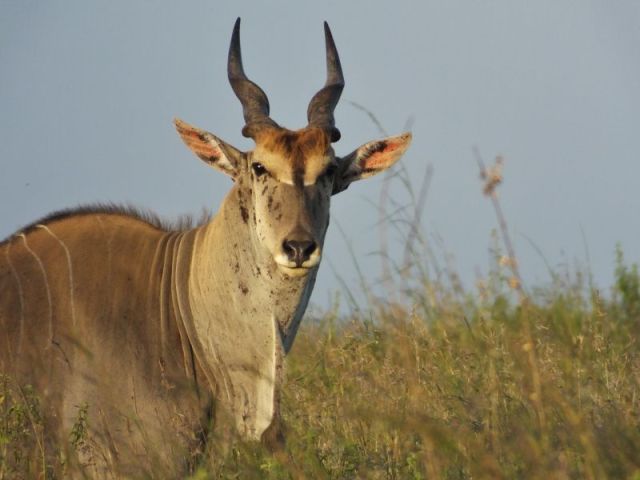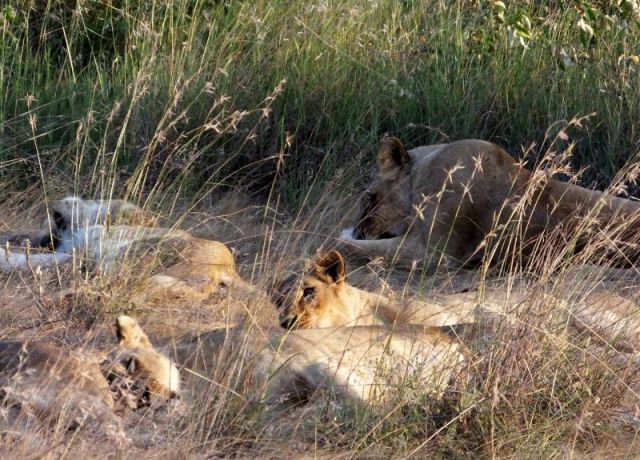Sosian part 8 2016

A closer view of how they built the stone wall around this cool tree. I have no photos that correlate with the first part of the blog:)
Paul and I are up before daylight this morning as Misheck is taking us out to see if we can find the wild dogs. We were told last night at dinner that we must reach the area where the dogs are living before they start hunting or the odds are we will never find them. A few of the dogs in the pack are collared and Misheck will be searching for the painted dogs using the tracker.
Paul and I are out of bed and dressing when we hear the familiar “good morning” outside our door so we thank our tea-tray deliverer in the same manner. After we have finished off our drinks and cookies, we walk out into the gloom of early morning to meet Misheck.
Misheck smiles and says “good morning” to which we echo the same sentiments to our guide, we load up in the Cruiser and off we go. We cross the river and when we reach the public road the headlights of the truck light up a few zebra grazing grass in the distance. Grevy Zebras! Rats, it is much too dark to attempt a photo just as the Grevy’s in Meru were too far away for a photo. Misheck says that maybe the zebra will be around when we return so we will hope this is the case.
I’m not sure how far or long we drive but when we reach the enclave of hills where the dogs reside the sun is shining dimly through the thin clouds. Misheck parks the Cruiser, gets out of the truck and pulls out the tracking device. Holding the antenna above his head he turns it this way and that way while looking at the signal on the receiver. Misheck declares that the dogs are on the peak of the formidable hills so he drives for short distances then stops to take another reading. As with the lions our guide is having trouble honing in on the exact spot where the dogs are. Mishecks’ main concern is which side of the hills the dogs will come down. Our perplexed guide turns around and drives back the way we came, declaring that “dogs are tricky”. He also murmurs more to himself then us that maybe we should drive around to the other side of the line of hills in case the pack is coming down on that side.

impalas we see in the early morning light
When we near the main road Misheck studies the dog signal device again and declares that the wild dogs have come off of the hilltop. A white Cruiser speeds by on the main road. Misheck identifies the driver and says that he and his two passengers are following the dogs. Paul recognizes the name of the guide Misheck calls out because he has read about the man on Safari Talk. According to Paul he is considered the guru of the wild dogs in Lakipia. Soon we are traveling the same path as the white truck as Misheck again picks up the signal from the dog collars. Before long we are wending our way through the bush, occasionally coming to a dead-end where there is no pathway for the Cruiser to get through. When this happens Misheck must back up and find another way to follow the dog’s electronic trail. We often see the other safarists through the trees to the side or ahead of us as they too are using an antenna to get a fix on the hunting dogs. Again the phrase “dogs are tricky” is uttered by our hard-working guide quite often in this phase of our search for the elusive dogs!
Misheck stops to take another reading and states that the dogs are “down there” pointing to an impenetrable thicket. Our excited guide jumps back into the vehicle and tells us he is going to try to get ahead of the running dogs. Misheck drives with purpose as we dodge obstacles and bounce along over the rough terrain. Our guide pulls the Cruiser into a small clearing and comes to a stop. I don’t know whether it was skill, luck, or a combination of the two but suddenly a full-grown impala appears to the right of the Cruiser pursued by wild dogs! The panicked impala gracefully leaps over a bush just a few feet from where we are sitting, as two dogs run in hot pursuit behind the antelope. There are two more dogs running to the left of us. The dogs and impala disappear into the dense growth of trees and bushes as quickly as they appeared. The dogs and impala came and went so fast that there was hardly time for my mouth to fully drop open in shock at the scene that unfolded in front of us. Paul admits that he has goosebumps after witnessing this purely wild spectacle. Obviously there was no photo opportunity in the few seconds the predator/prey scene played out. Unbelievable.
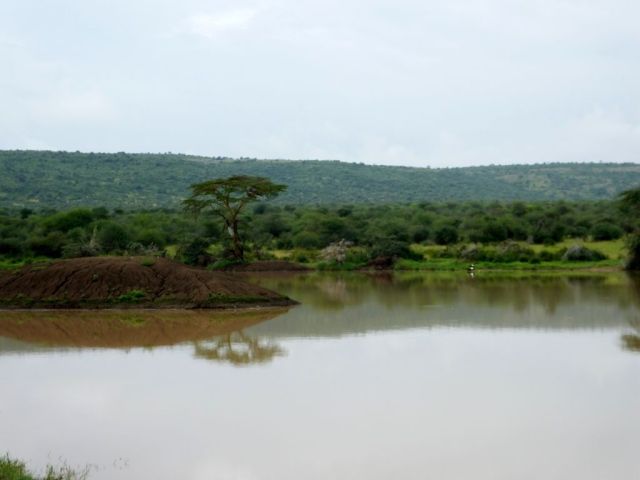
Lake or pond. It was lovely no matter what you call it.
Misheck cranks the Cruiser up and once again we are in tracking mode with our guide telling us that “dogs are tricky” when he can’t find a strong signal to follow. We meander this way and that and eventually we find ourselves driving near a small lake or big pond, depending on how you look at it. We catch a glimpse of the other dog tracking vehicle and this assures Misheck that he is indeed close to the dogs. A bit later we again see the white Cruiser through a screen of tree limbs but this time they are sitting still. We shamelessly drive over to where the truck is parked and discover the trio snapping photos of wild dogs that are scattered about in the grass. The hungry canines are scarfing down something they have killed but it sure isn’t the impala they were chasing earlier. It appears to be the remains of an unfortunate dik-dik although there isn’t a lot left of the critter to identify. A couple of the dogs have finished eating whatever they managed to snatch from the small carcass while the other five are still dining on their share. One of the dogs who is now empty-mouthed, approaches one of his pack mates who is still dining on what it claimed from the kill. As the still hungry dog tries to steal some of the meat from the eating dog, he is firmly rebuffed with a snap and a growl.
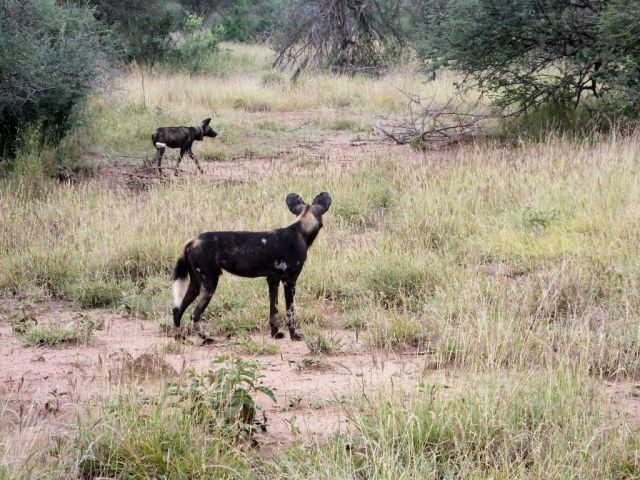
Two of the seven wild dogs when we catch up to them
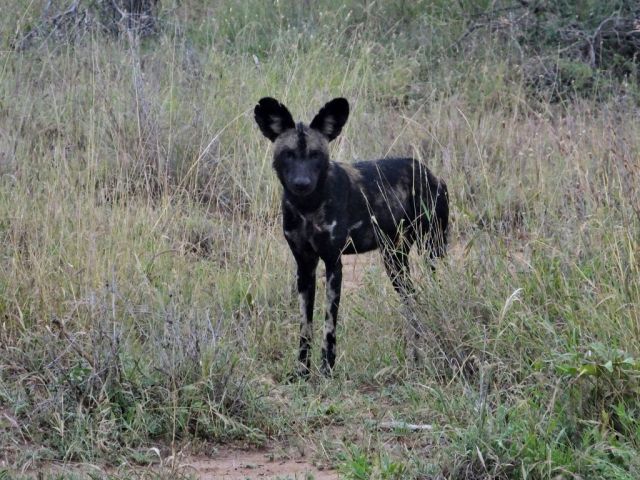
All of these dogs seem darker than the ones we saw in Selous

The dogs do rest briefly after their meal

The only dog with a collar in the pack of seven
I am taking photos but my camera is not wanting to focus part of the time. Darn it, I don’t know what the problem is but this isn’t the time for my camera to be acting up. Eventually the dogs finish their snack and Misheck thinks they will rest for a while but this proves not to be the case. Two of the dogs begin to trot off and soon all the wild dogs are loping away. We easily follow them at a comfortable distance, as does the other vehicle, since this area is quite open. Suddenly two of the painted dogs flush a hare and the chase is on. The hare and dogs disappear into a patch of bushes where it is impossible to drive or see the dogs. Paul and I agree with Misheck that we will leave the wild dogs to their hunting and we will head back to Sosian so we can eat some breakfast ourselves.
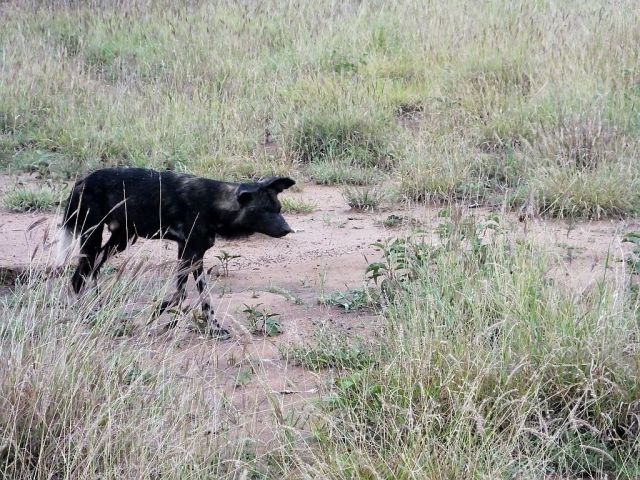
Preparing to move on
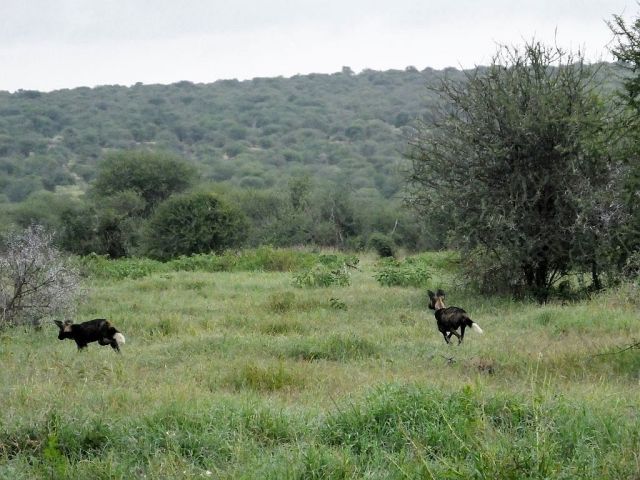
Two of the dogs as they lope ahead of us

One dog runs out of the brush and crosses in front of us
Paul and I are grinning like the Cheshire cat as we begin the drive back to Sosian. Along the way we stop to observe a small herd of elephants as they are foraging on leafy bushes next to the red dirt road. There is one very small baby that we catch a glimpse of occasionally as the little one plays peek-a-boo from behind a clump of bushes. One young male, who is feeling his oats, fans his ears and shakes his head at us while advancing towards us a few steps. The feisty fellow backs up and tries to intimidate us again but when he realizes that we aren’t impressed he turns around and rejoins the feeding elephants. Some of the elephants cross the road behind the Cruiser and we wait a while longer in hopes that mom will bring her baby across. When no more elephants cross and in fact they begin walking away from the road, we give up on seeing the little one in the open and continue on our way to the lodge.

The tough guy

Elephant parade behind us
A Damara dik-dik is lying in plain sight near the road on a patch of bare ground. The long snouted antelope stares at us curiously as we stop to take a picture of the unusually brave animal. Normally in my experience dik-diks will stay put but they always seem to be trying to hide in heavy grass or bushes. After a bit the dik-dik stands up and stretches but still shows no inclination to run and hide. We leave the delicate antelope behind and continue down the road.

Damara Dik-dik
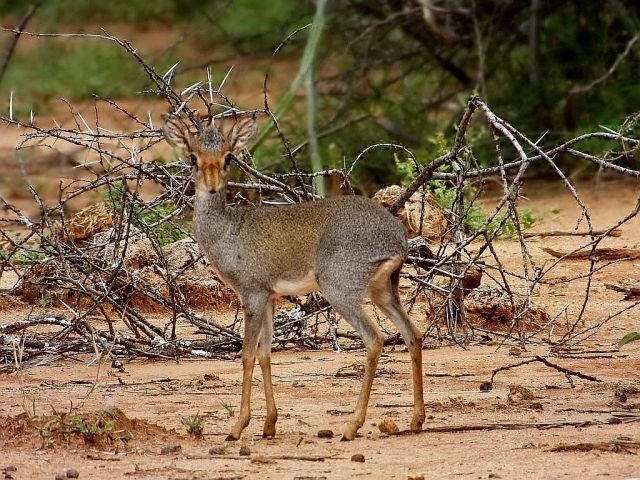
The small antelope has no fear of us
We are driving on a high point, (we were driving this part of the track in darkness this morning), where a beautiful panoramic view is spread out before us. The rock formations are stunning and include one that is named Baboon rock. No explanation was asked or given about the name but one would assume that baboons frequent the area. Not far from the lodge there are a large herd of elephants that can be seen sprinkled through the brushy landscape. As we drive by the field where the Grevy’s were illuminated in our headlights this morning, (gee that seems so long ago), we are disappointed but not surprised that the rare zebras’ are nowhere to be seen. Oh well, you can’t win them all.
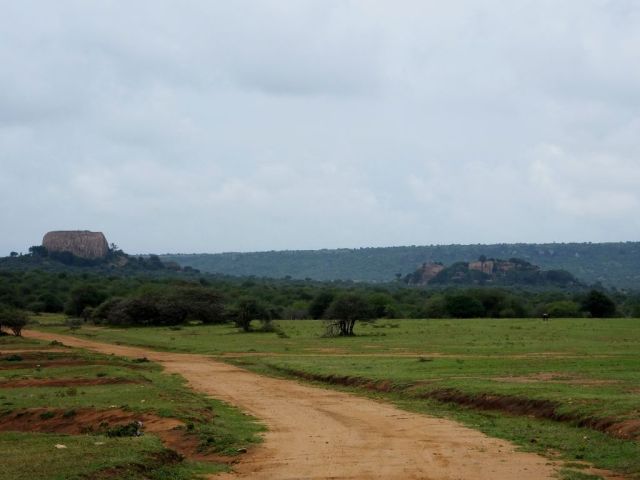
Baboon rock on the left
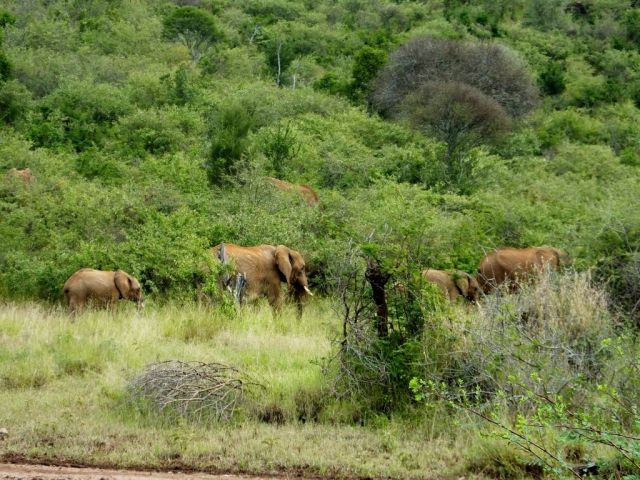
A herd of elephants walking in the bush
Instead of crossing the bridge that takes us to the lodge, Misheck turns onto a side road and announces that we will be eating breakfast by the river. There is a gorgeous African Fish Eagle perched in a yellow fever tree that is growing along the edge of the river. Of course I must have a photo and the eagle seems happy to cooperate for me.

African Fish Eagle
As we pull up to the breakfast site, we see that the New Jersyites are also here for the open air meal. The food is being prepared by three of the staff, including Patrick the lion tracker, over a wood fire. We must be late as the foursome is nearly finished eating breakfast. Paul and I order eggs but while they are being cooked by the chefs, we enjoy some pancakes and fruit. Paul and I eat heartily but after all it must be ten o’clock! We exchange our experiences from this morning with our breakfast companions. The women went horseback riding and dad stayed at the lodge and relaxed with a book and we tell them that we chased after wild dogs.

Breakfast fare laid out on stone tables

Another stone table with breakfast fare

The breakfast chefs, Patrick is sitting in the chair
Once we have finished eating, Simon, rifle over his shoulder, leads the six of us along a path beside the rushing river that will take us to a waterfall. Paul and I ask Simon how much rain they received last night and are told 1.5 inches, (he converts it for us), but surprisingly the path isn’t too muddy. On the other side of the river I see something swimming along the river’s edge and ask Simon if it is a snake. It doesn’t take Simon long to identify the creature as a water moniter and this becomes clear to all of us when the reptile crawls out of the water and walks away.
As we near the waterfall we can hear the roaring water long before we see it. Simon leads us to an open spot where we have a clear view of the cascade of muddy water that is thundering over the ledge into the river. I take two quick photos because the force of the falling water crashing into the river sends a fine spray of water over us and I don’t want to take a chance of getting my camera wet. The rocks we are standing on are slippery from the moisture that is collecting from the spray too. Simon tells us that when he brings clients here the normal activity is to climb to the top of the falls and then the delighted tourists jump off the ledge into the placid pool of water beneath the waterfall. HA! That sure isn’t happening today as you would be pounded senseless by the force of the raging water.
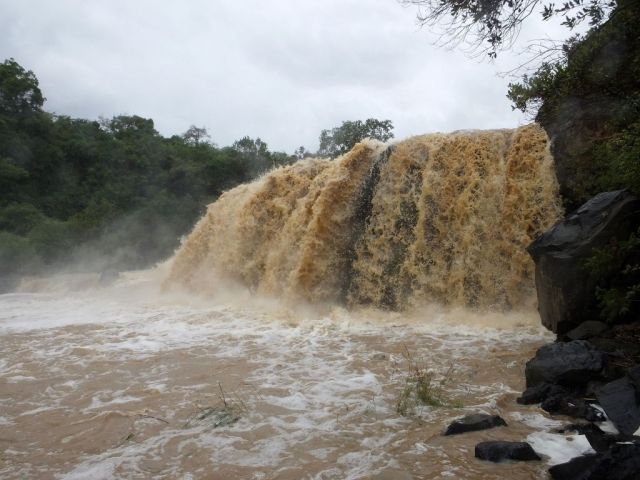
The roaring, muddy waterfall
Simon is taking us to the top of the falls just so we can get an overhead view so we march on. Simon stops at the base of a rocky outcrop and says we can climb up the face of this rock or take a much longer although easier hike to the top. The New Jersians who are avid hikers opt for the rock climb. Mom and daughters go first with a little help from Simon who directs them to hand or footholds. I watch and decide that if our guide will help me I can do this too. The rock face isn’t that tall, (30ft?), but it is fairly steep, so I follow the directions Simon gives me and occasionally he firmly grabs my wrist keeping me steady in some of the more dangerous places. Paul is next and he is not real happy about climbing up this way, remember heights are not Paul’s thing, but with Simon helping Paul, he has no problem. Dad waits until last but I think he was staying behind in case Paul and I might need to be caught if we fell:). He climbs right up the wall too.
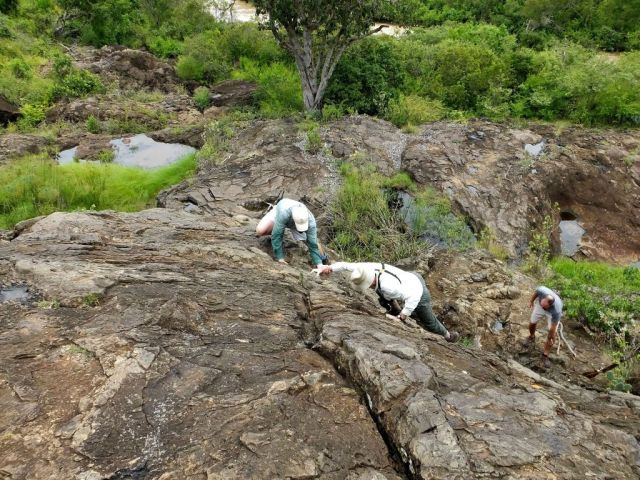
Paul climbing up the rock face. It is steeper than it looks in the photo
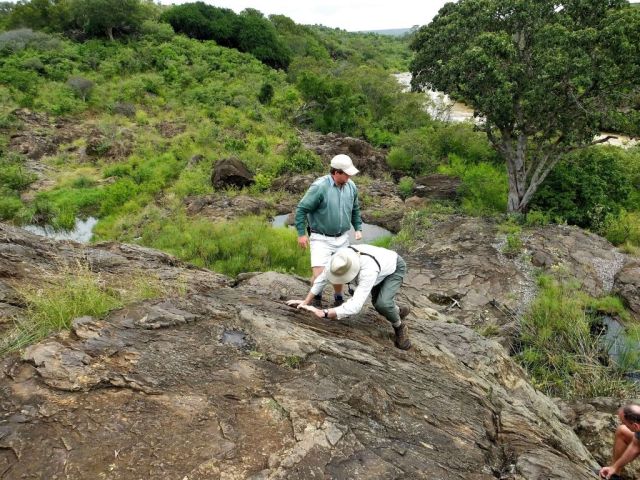
Paul nearly there.

Lily pads in bloom in a pool below us
The view is stunning up here and Paul comments that looking out over the bush from this lofty view it truly shows that we are in the wilderness. No telephone poles, no fences and no houses to be seen. If you want to see the waterfall from this angle it is necessary to climb down more rocks and Paul and I decide that we will forego this, no sense tempting fate. There are lily pads in bloom in a pool of calm water below us plus interesting plants managing to grow on top of the rocks where we are standing. Once we have had our fill of the impressive vistas, Simon leads us to the other side of the river and up the hill where we can see the Cruisers are waiting for us.

Paul just soaking it all in. Roy after seeing all the ticks on the cattle we tucked our pant legs into our socks!!

Yep, I really am here
There is also something else waiting for the New Jersey family which is four camels! Camel riding is another activity the lodge provides and the family decided they wanted to experience riding a dromedary. Simon asks Paul if he wants to ride one as the two girls can ride double. Paul says if the girls don’t mind sharing a camel he would like to ride a camel. The girls have no problem with this arrangement so Paul is going for a camel ride. I already nixed a camel ride because my back is nearly healed and I don’t want to risk aggravating that muscle again.
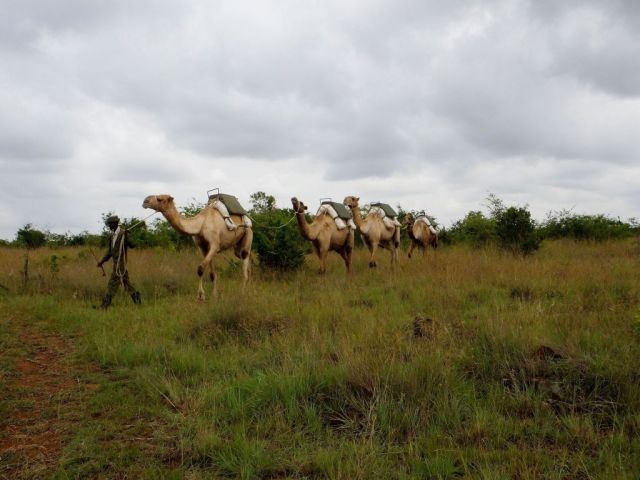
Camel train arriving
The camel driver soon has the complaining camels lying down so the riders can climb onto the saddles that sit on the camel’s backs. Paul is put on the first camel, the two girls crawl on the second, Dad, who hesitates a bit when his camel lets out a cantankerous squall, settles in the saddle of the third, and mom is placed on the last camel. Every one hangs on to the iron bar that is anchored to their dromedaries’ saddle as the camels rise to their feet. The camel driver leads Pauls’ camel while the other camels are tethered to the camel in front of them so the riders are not steering the animal, all they have to do is hang on.
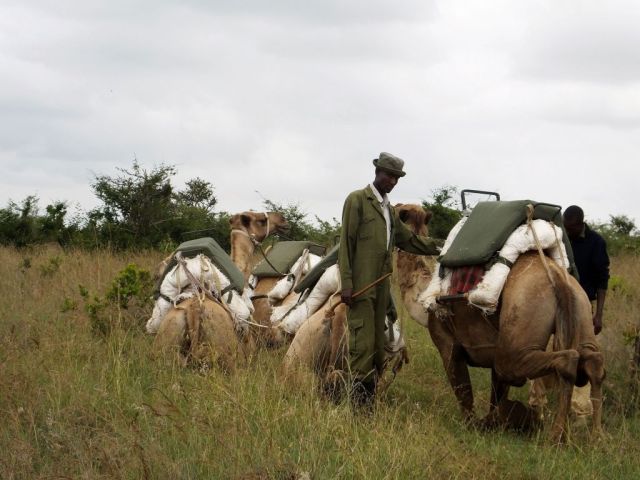
The camel handler getting the camels to lay down

Paul is the first one to get on a camel

Camel cowboy
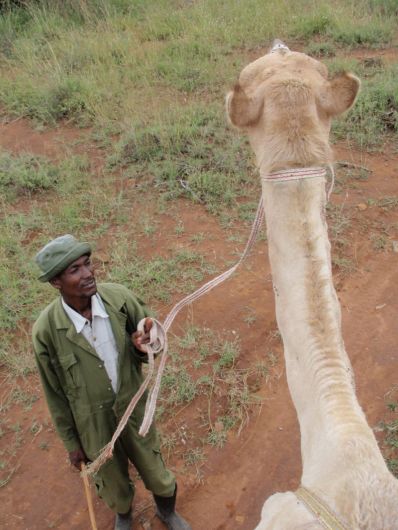
Paul took this photo sitting on the camel
I ride in the Cruiser that drives in front of the camels so I can take photos of the camel train and the swaying riders. Simon is striding alongside the front camel, walking shotgun so to speak! After twenty minutes the camel ride comes to an end and the camel driver orders the camels to lay down one at a time. There is quite a steep angle for the riders when the camel is kneeling but its rear end is still in the air. Paul pushes against the saddles’ handle bar and has no problem staying upright until his camel is settled on the ground, and then he steps off. Soon everyone has dismounted and the girls feed some treats to a couple of the camels. Once all the treats and petting are finished the camel driver slings his long legs over the saddle of the camel Paul was riding and the dromedary cuts loose with a string of sounds that I’m pretty sure was cussing in camel talk.
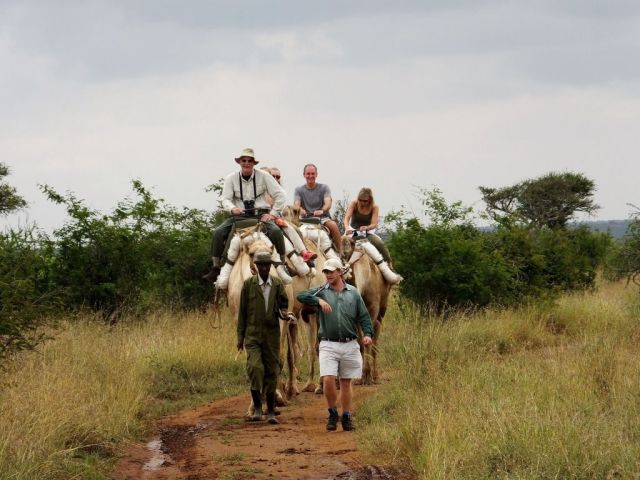
I don’t think Simon expects any trouble with wild animals the way he is carrying his rifle:)
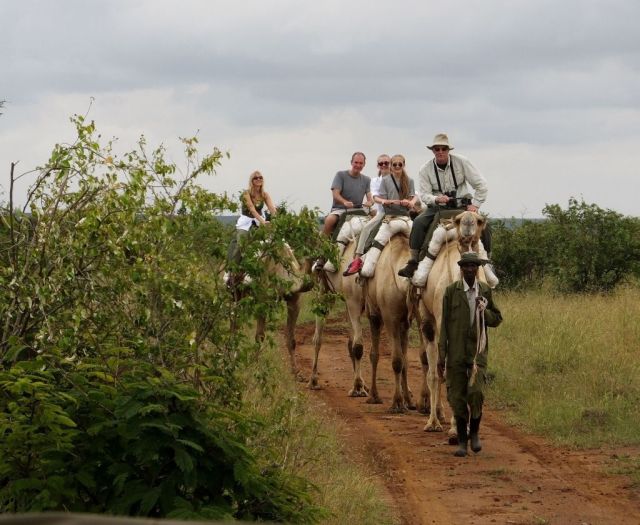
The camel trek is nearly at the end
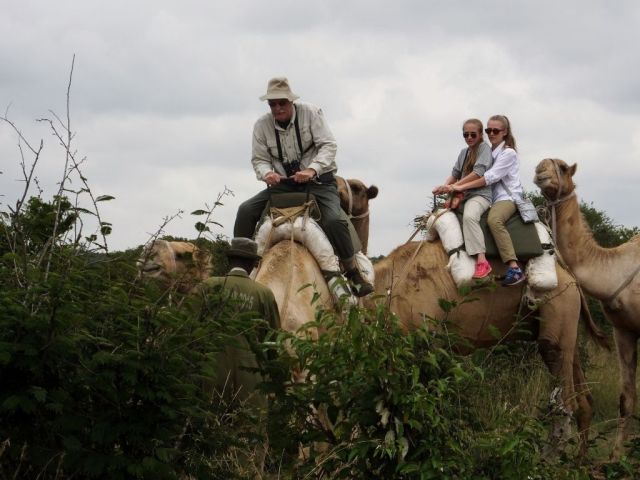
Preparing to let the riders off
Now the camel riders load up into the Cruisers. Paul and I are going back to the lodge but the New Jersians are going tubing in the river! They are much braver than I am for sure. I asked Paul how his camel ride was and he replied that it was pretty cool but not comfortable so twenty minutes was long enough.
More guests have arrived this morning at Sosian and we meet them at lunch. A young woman with a blonde-headed toddler, who is a distant cousin of Simons’, has brought a couple from Germany who will be staying at the lodge. They all speak English quite well so we can visit easily with them too. We learn that the adventurous family has had great fun tubing in the fast flowing water of the river.
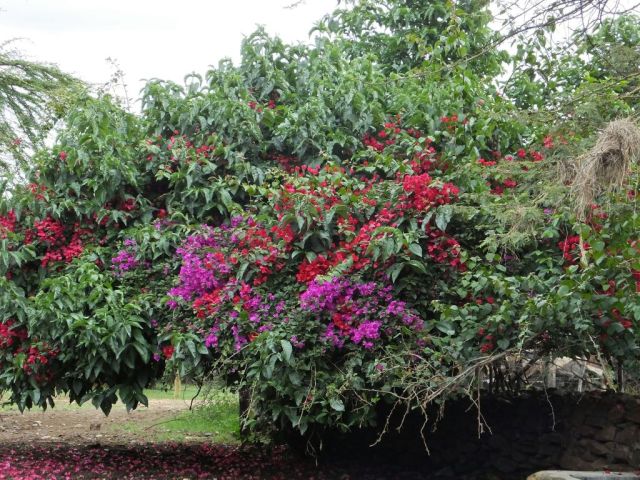
More beautiful blooms which I don’t do justice to in the photo
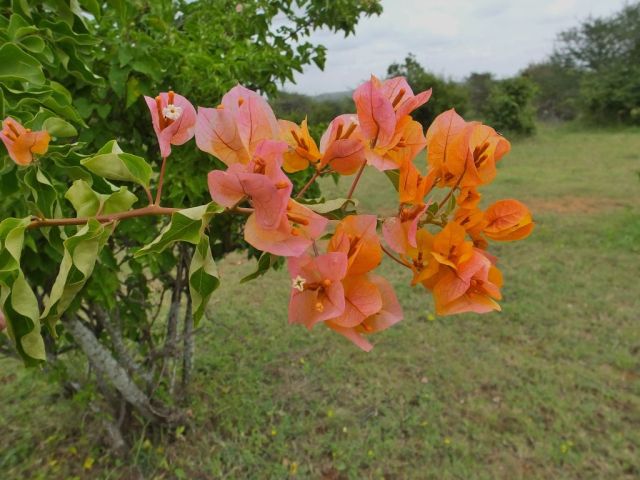
We enjoy the lunch as usual and after eating Paul and I decide to explore the grounds. Rosie tells us to stay on the road that runs around the lodge and we will be fine. We walk down the road enjoying the riot of color on the various blooming trees scattered throughout the grounds. The stables and horse riding arena are quiet this afternoon. We find an agama lizard sunning on the skull of a cape buffalo which is kind of creepy. As we walk back into the yard there is a large leopard tortoise grazing on the short grass, but it retreats into its shell as soon as we approach. We discover the garden and take a self-guided tour of squash plants, beets, and peas, among other things. We hear two pigs grunting in the pen not far from the garden but we can’t see them. Our tour concluded, Paul and I return to our cottage until it is time to leave for our afternoon adventure.

Agama lizard sunning on a cape buffalo skull

Leopard tortoise drawn into his shell

A portion of the garden at the lodge
This afternoon the New Jersey family plus Paul and I are going to visit a local village but that will have to wait for the next blog. Nancy
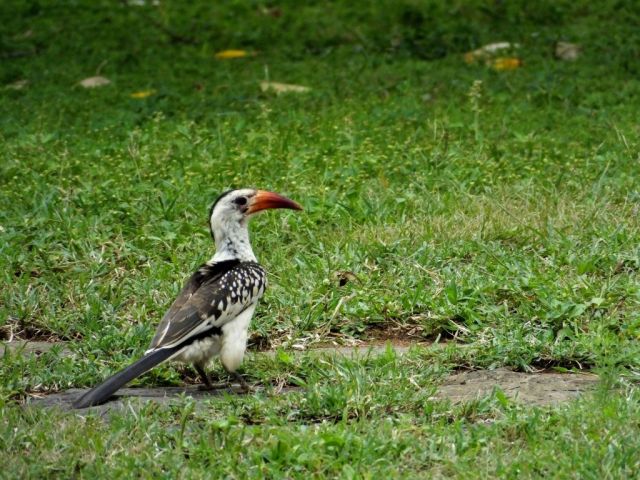
A red-billed Hornbill we encountered on our walk around the Lodge grounds



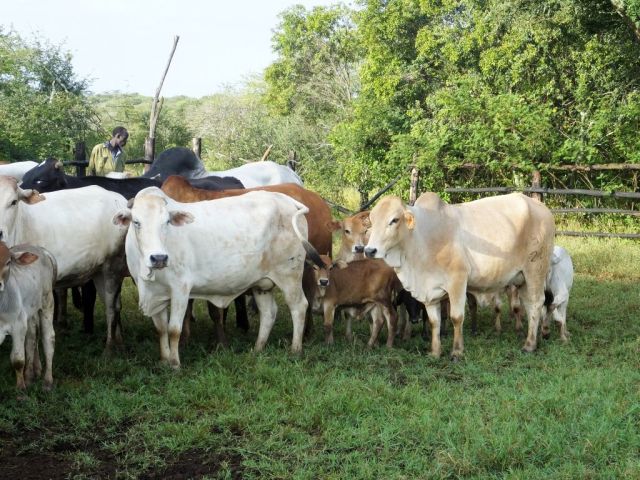
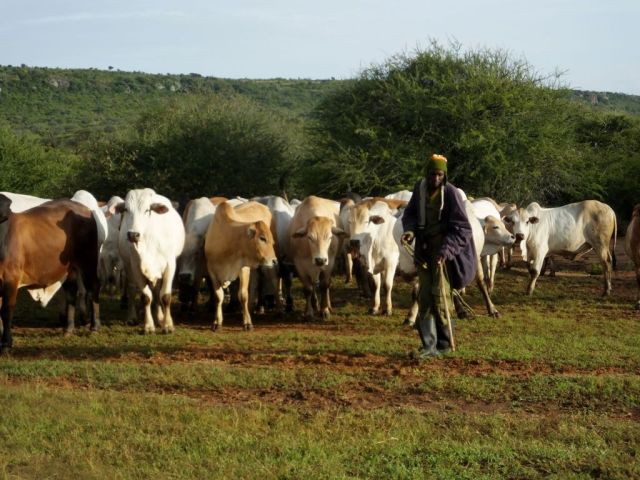
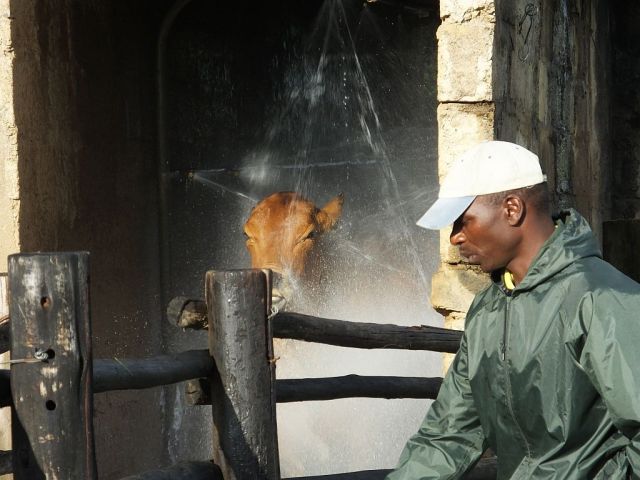
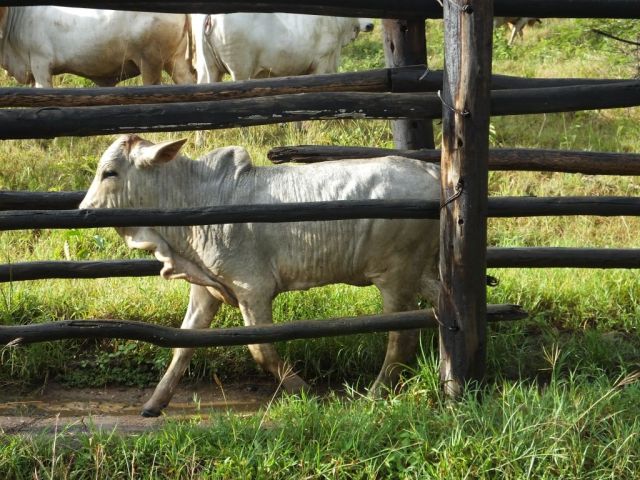
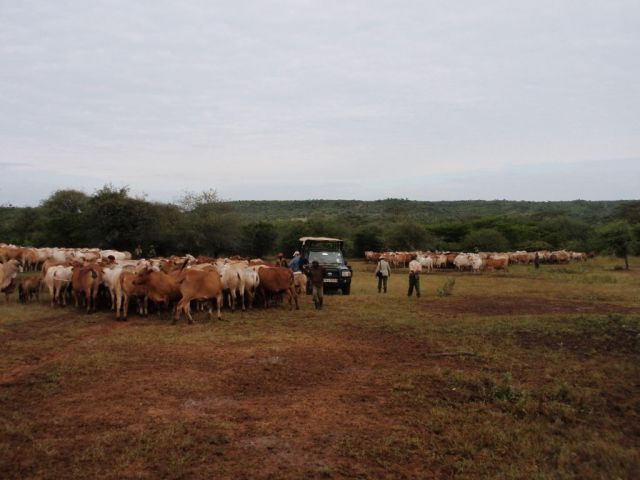

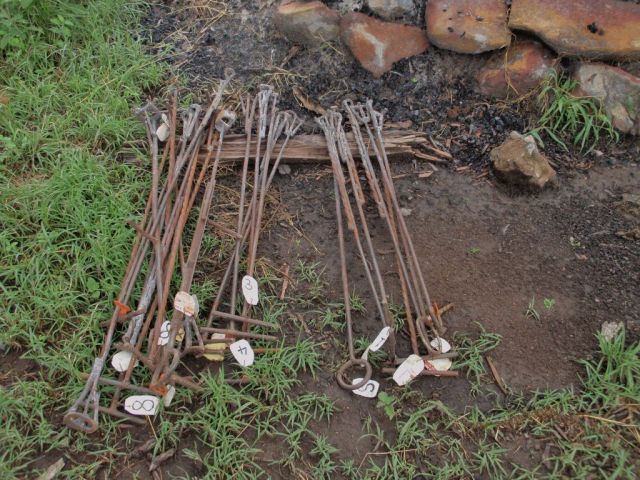



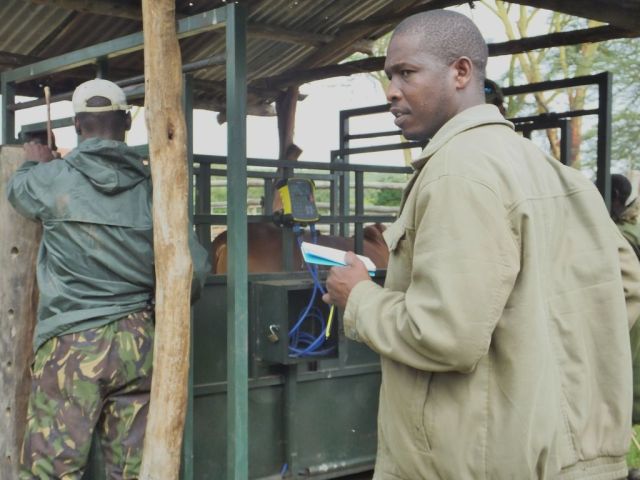
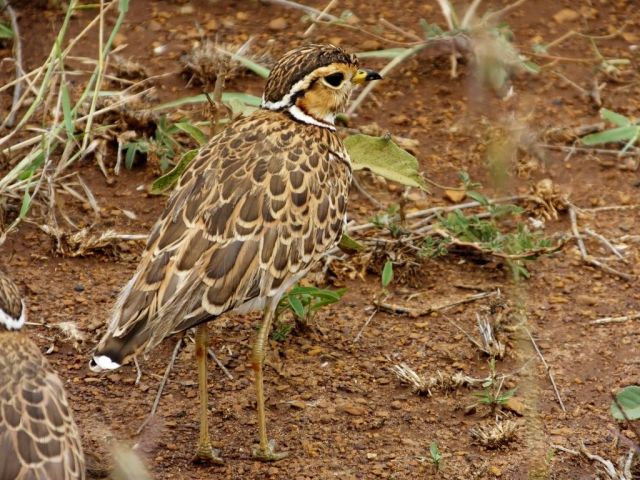


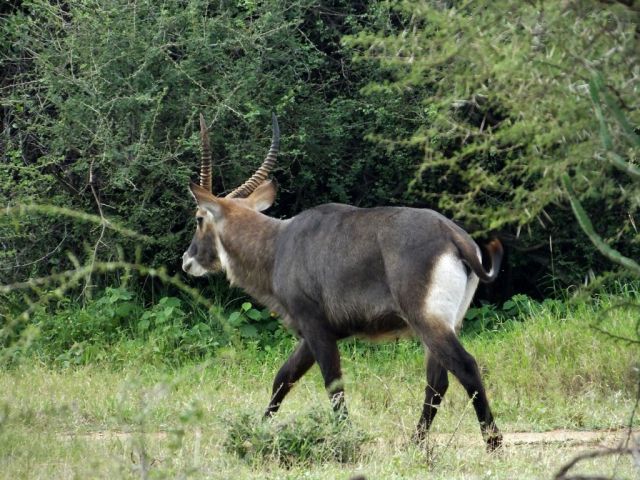

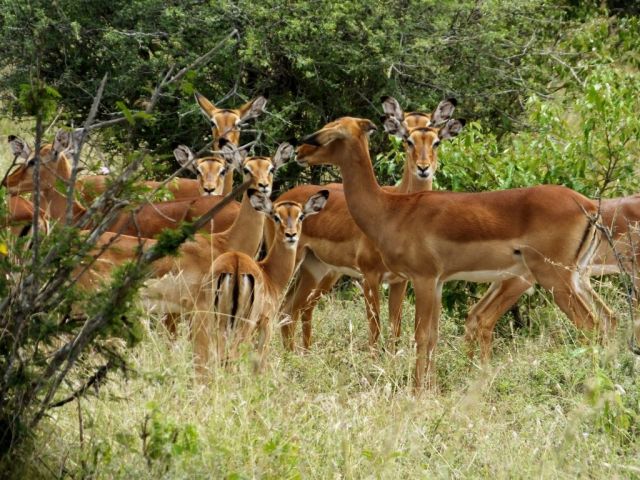


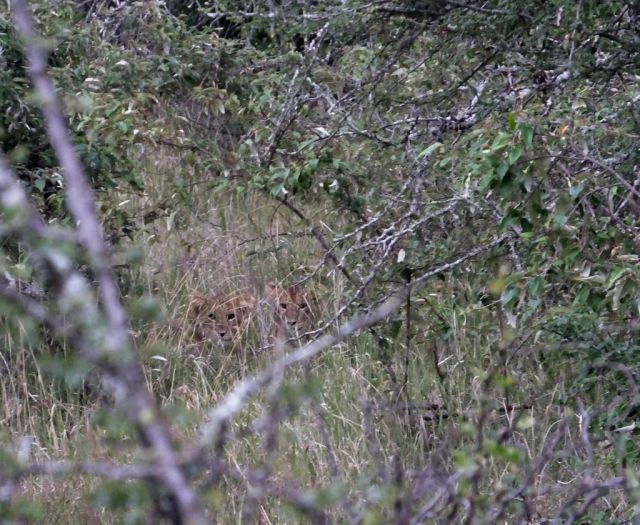


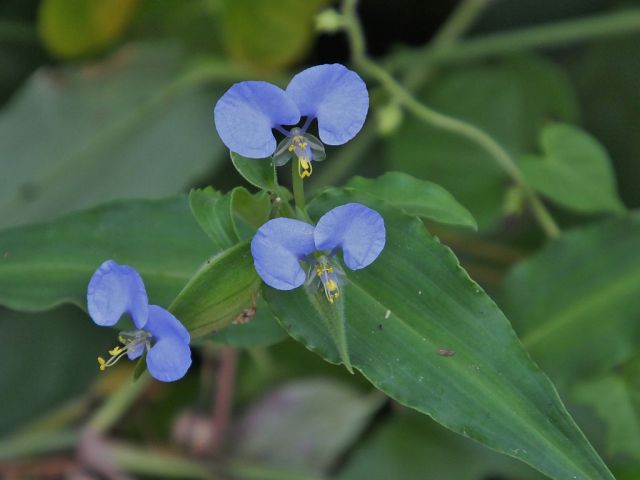



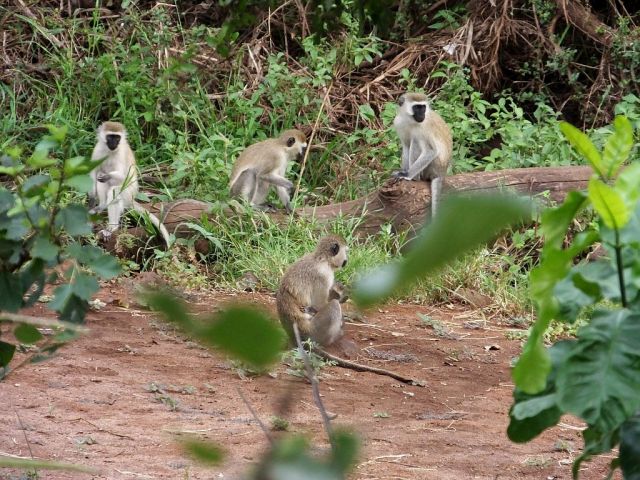
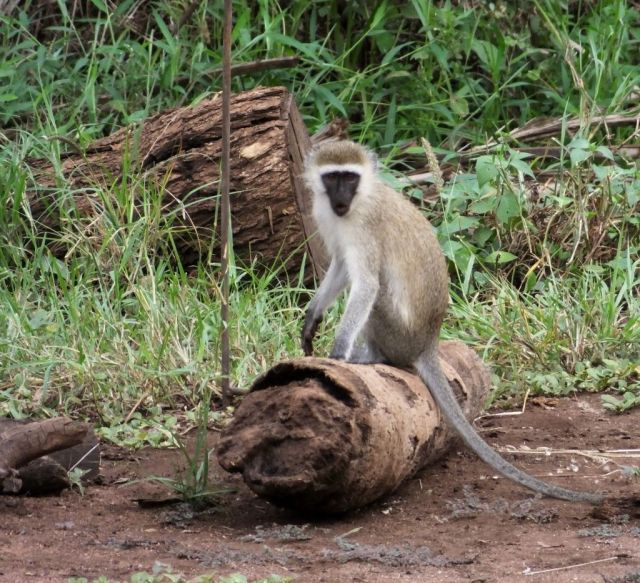



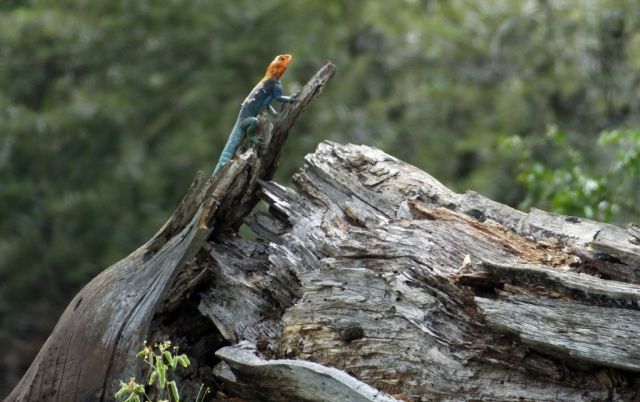
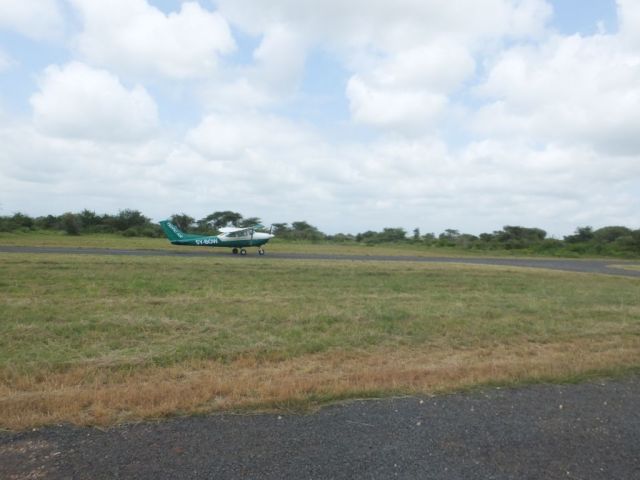
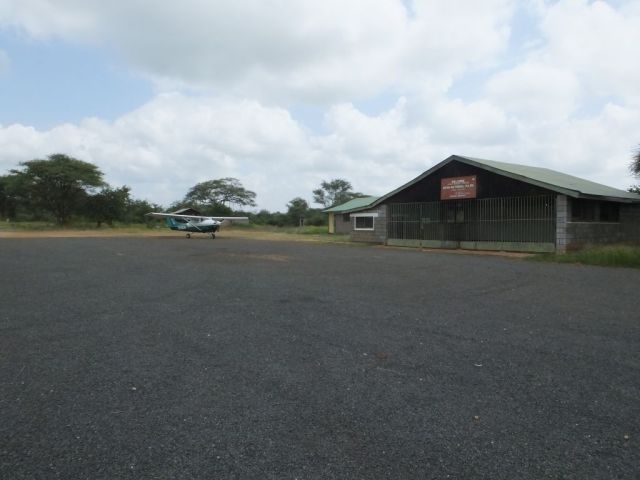
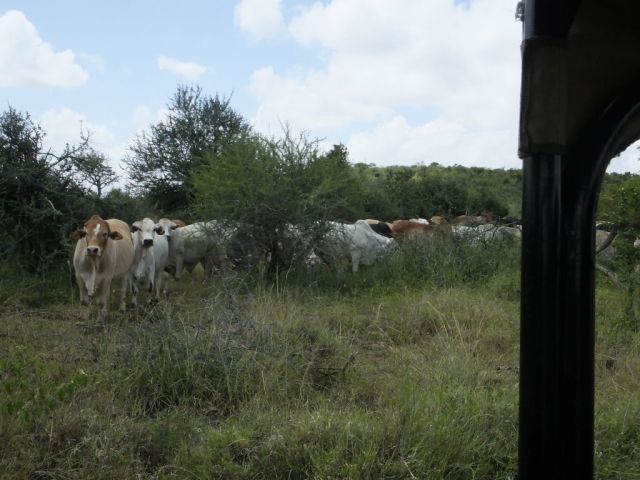

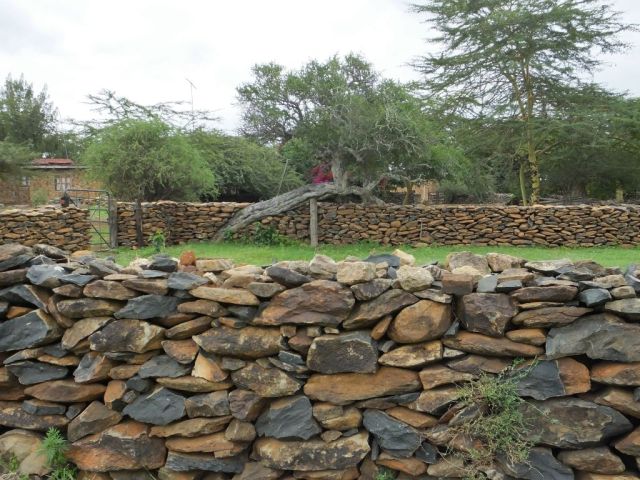

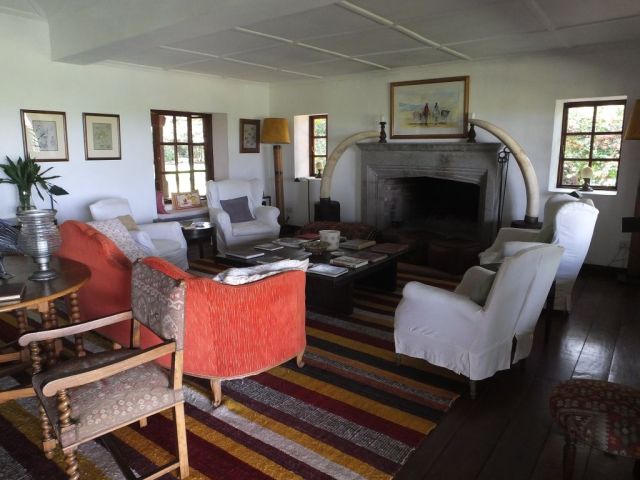




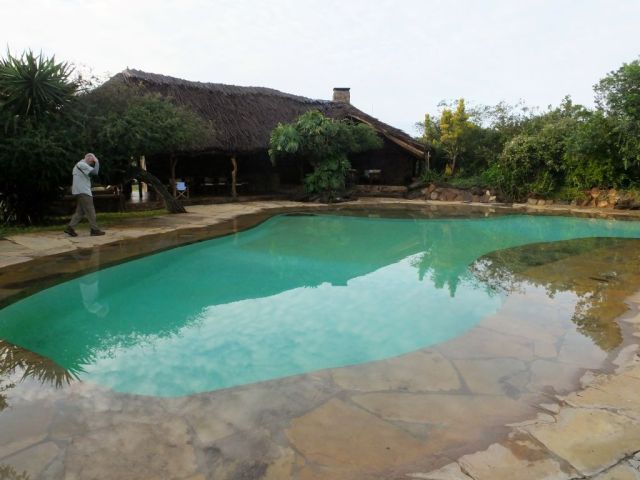

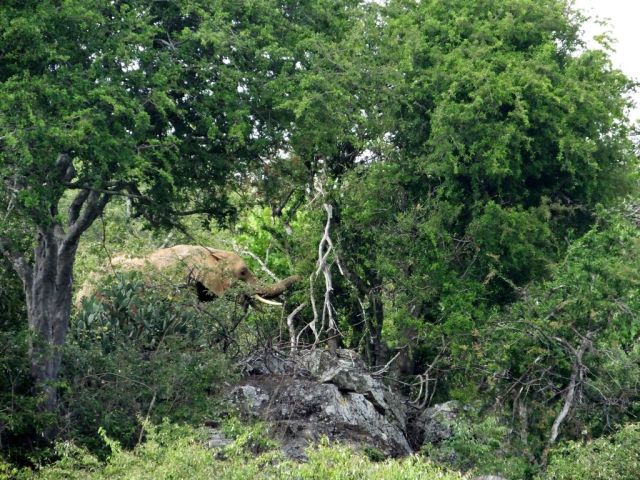
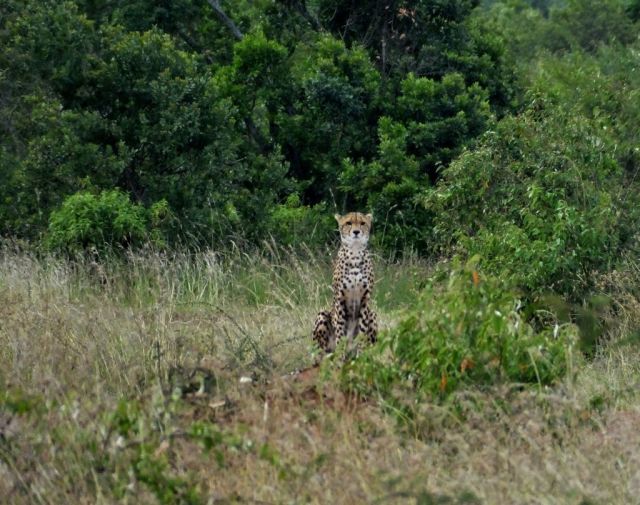
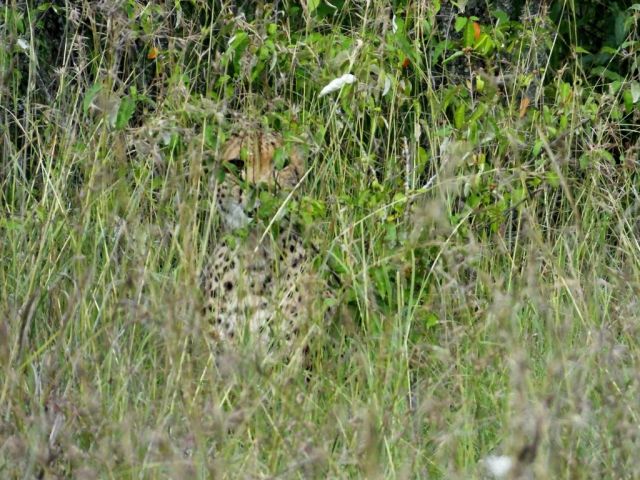




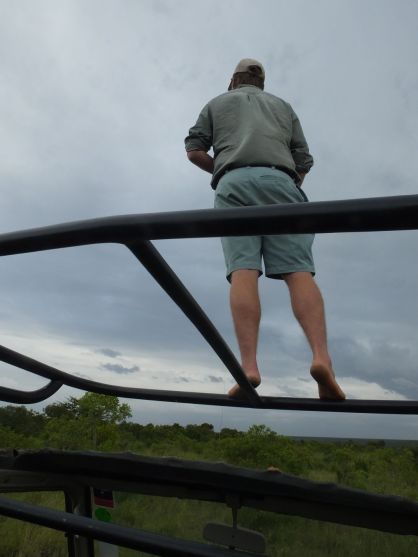
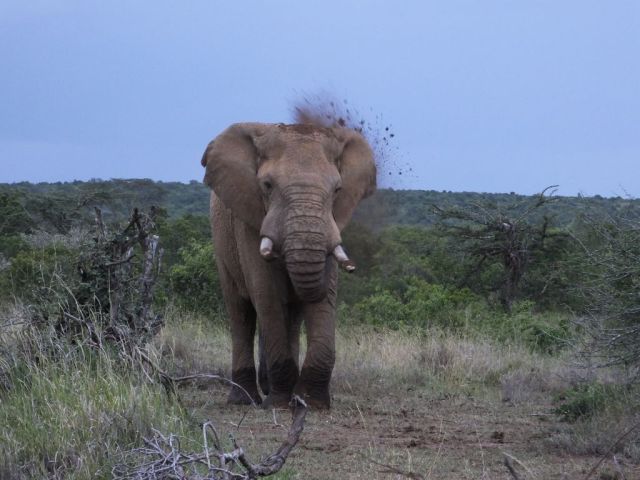
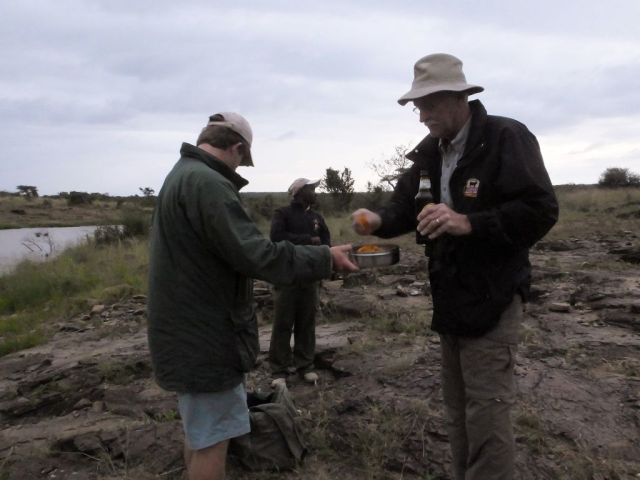





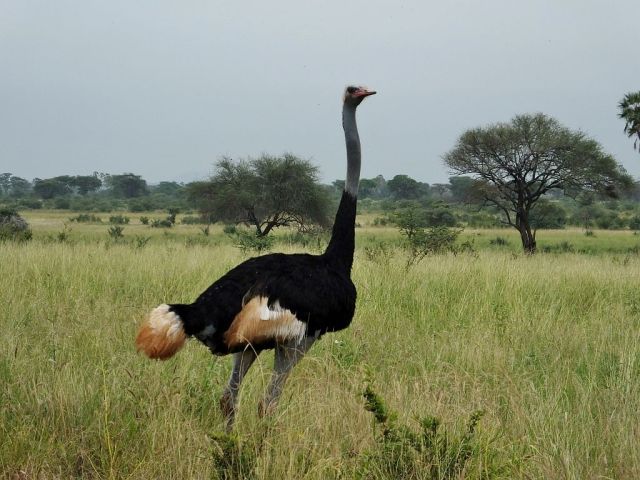
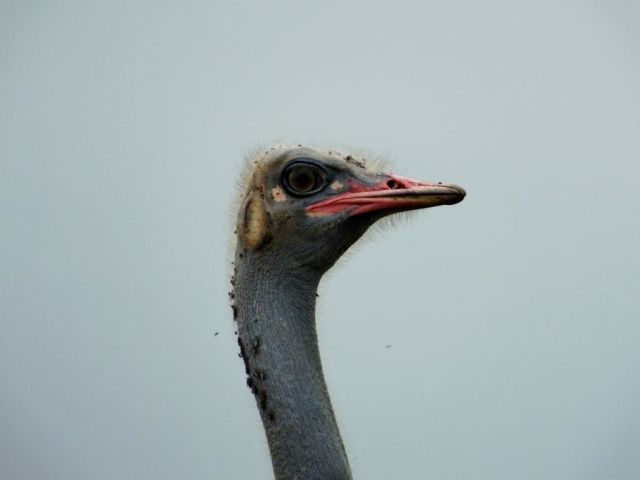


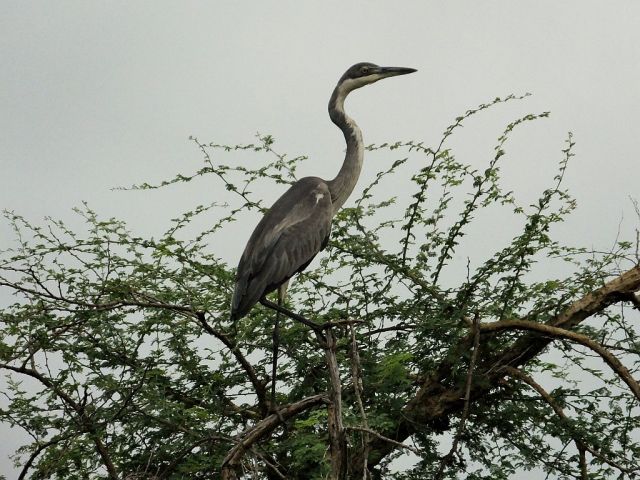
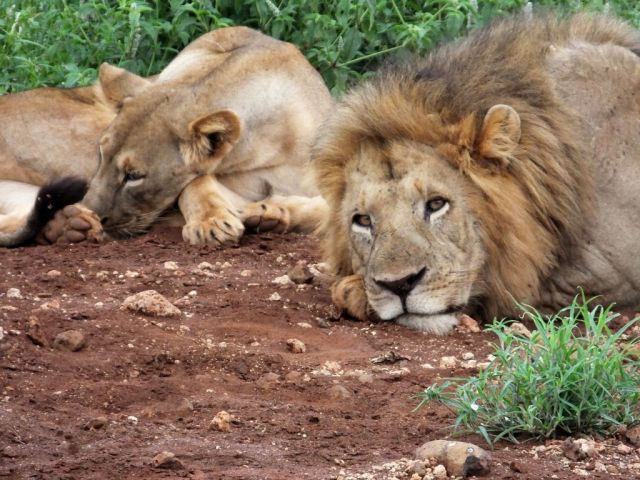


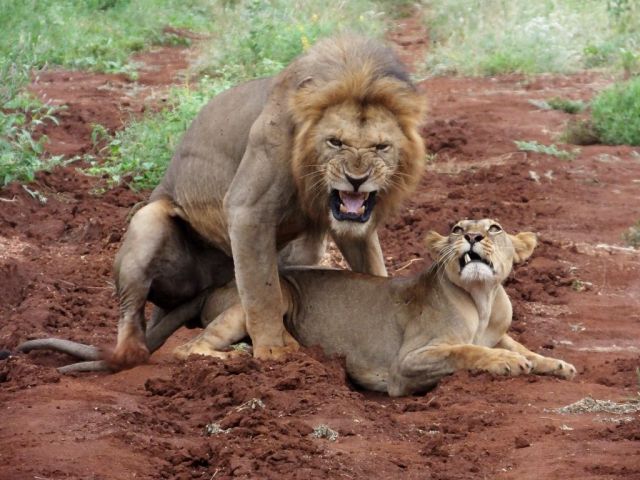



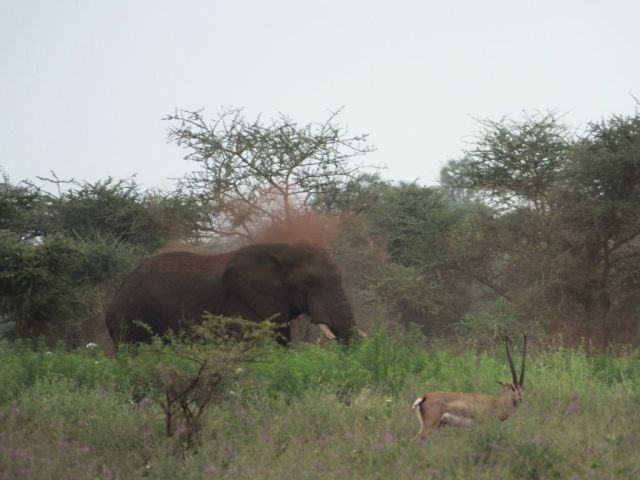

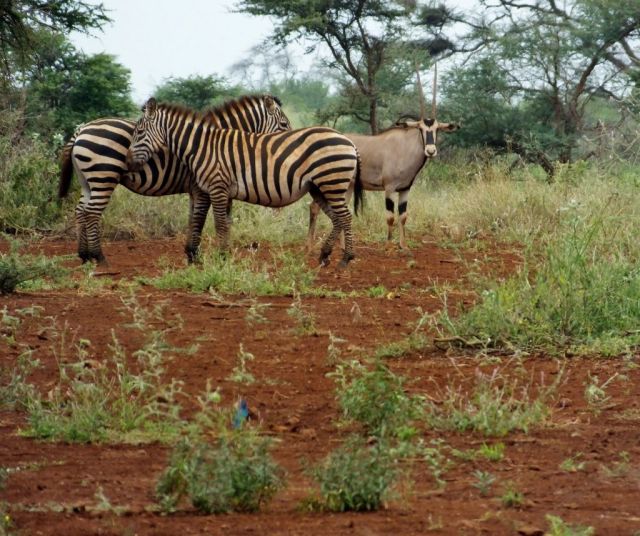

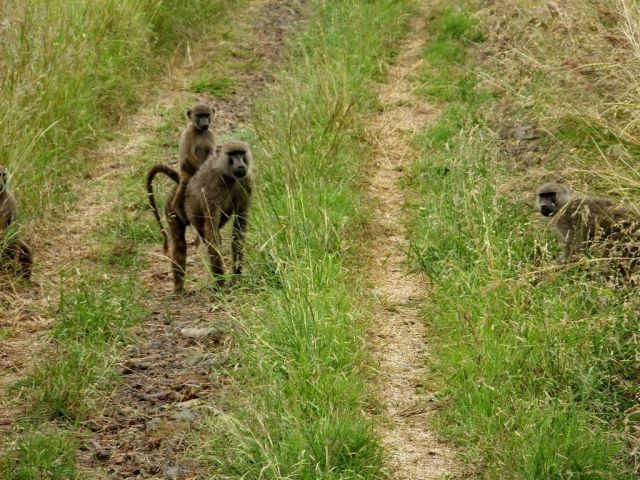
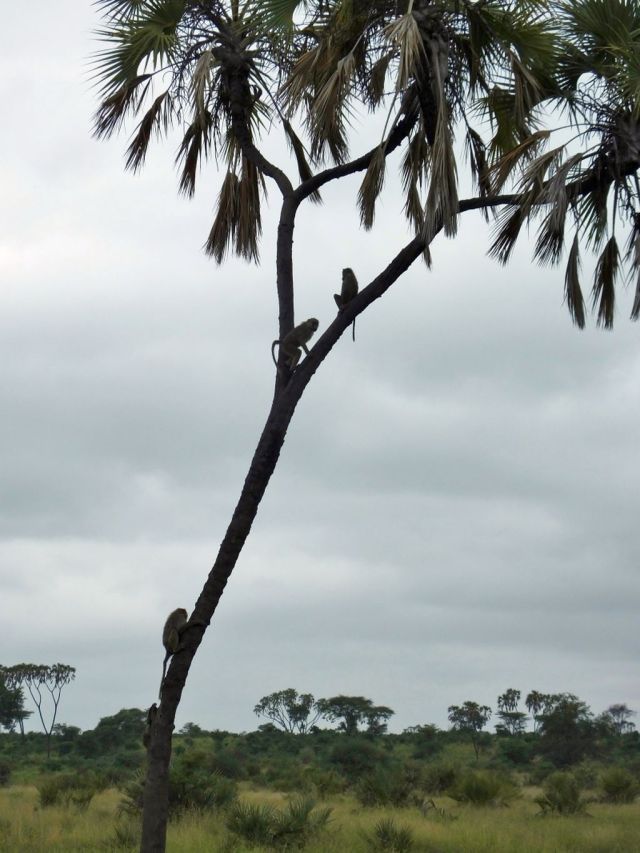





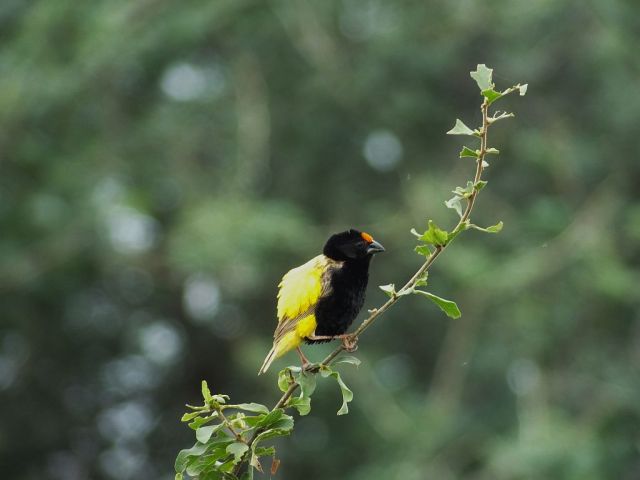


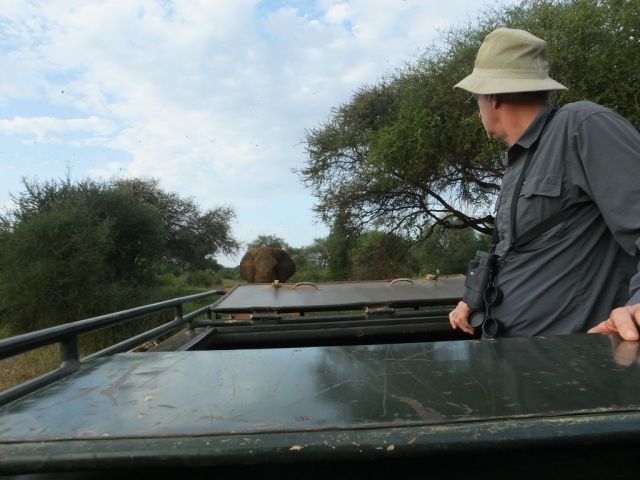
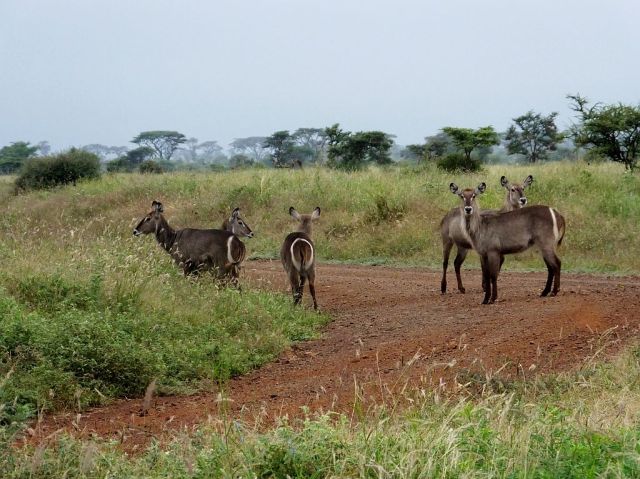


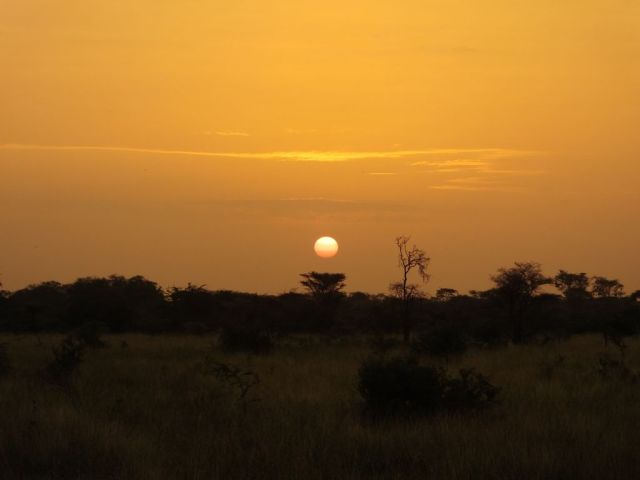



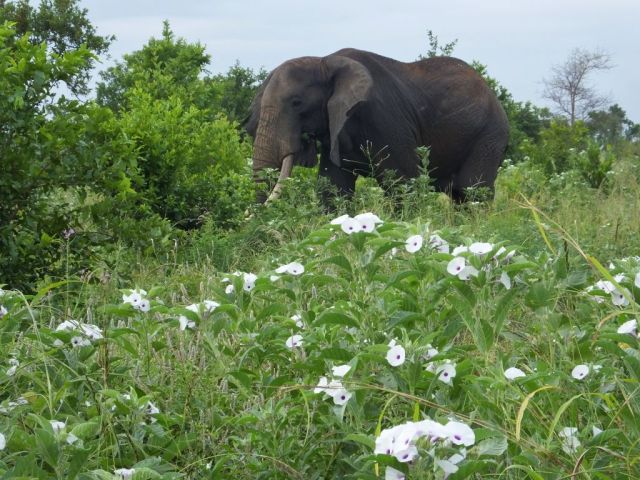

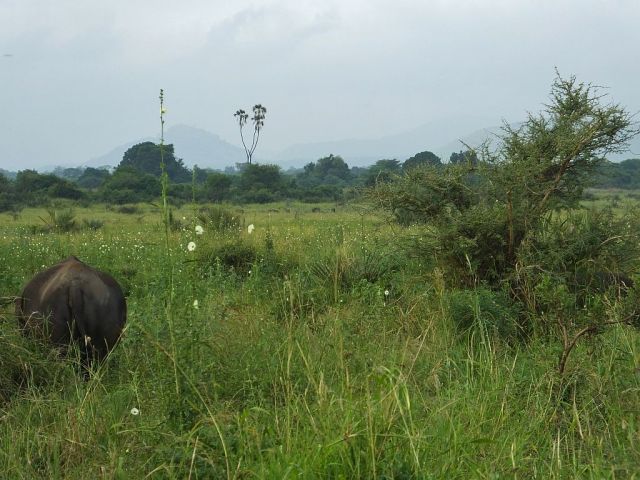

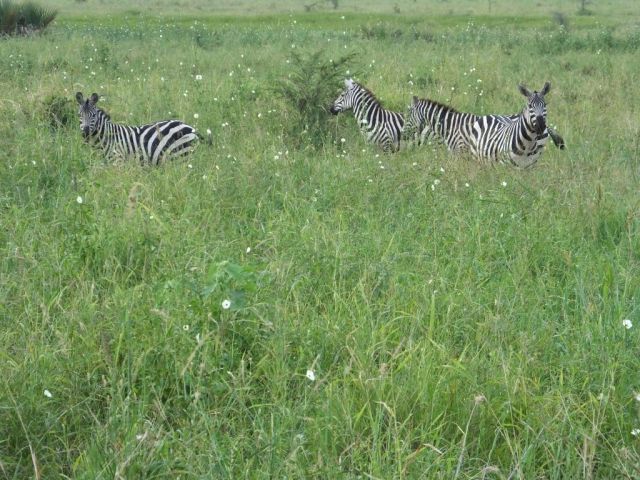



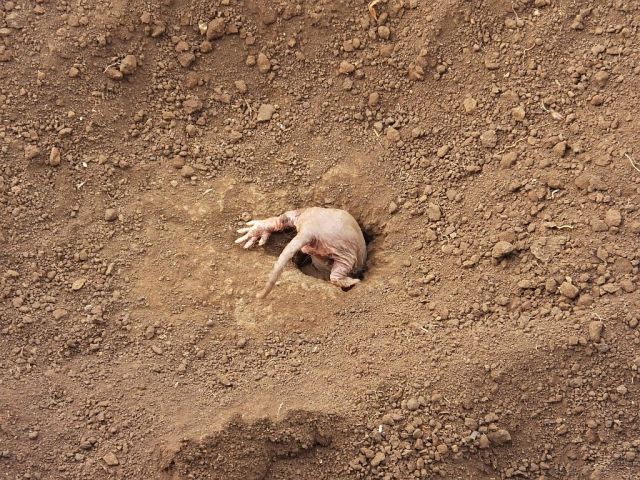






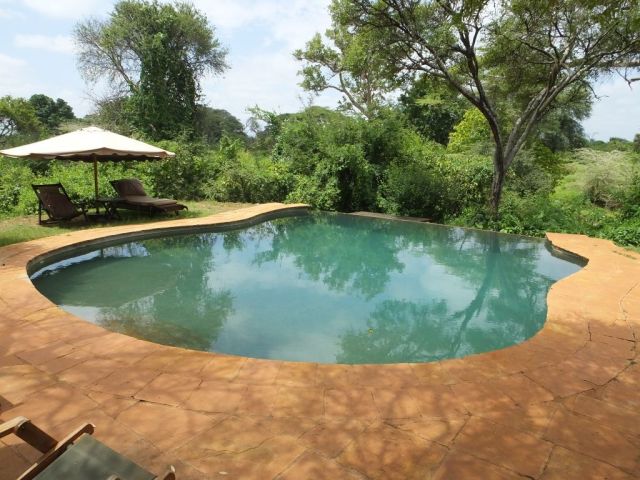
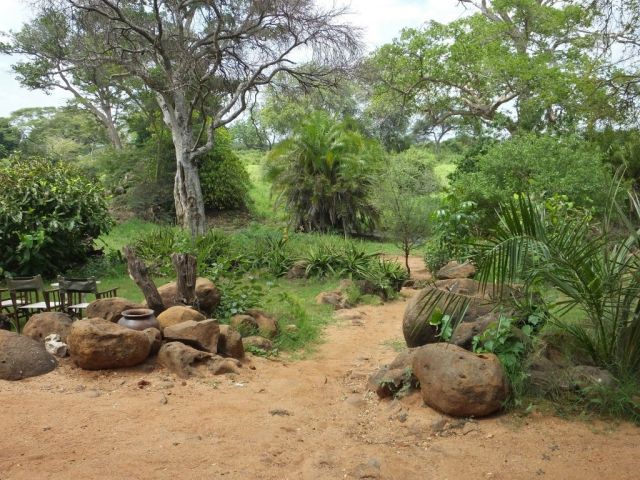
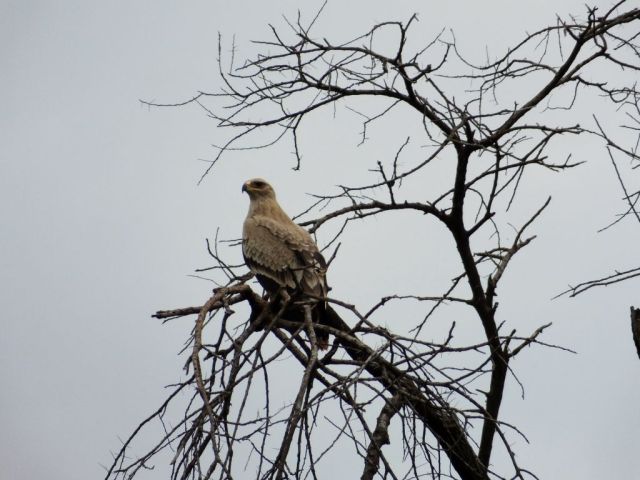
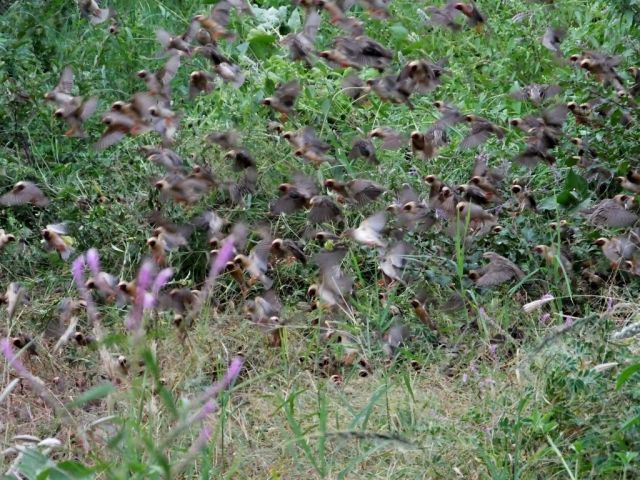
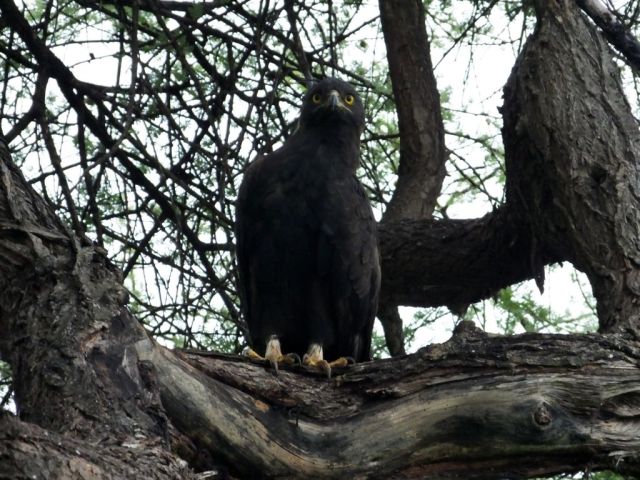
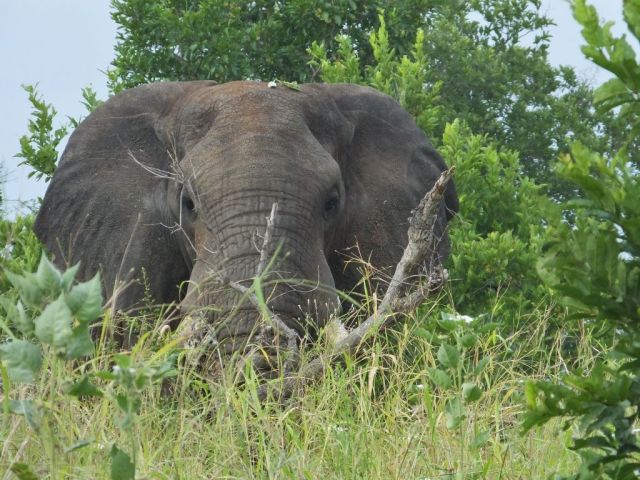

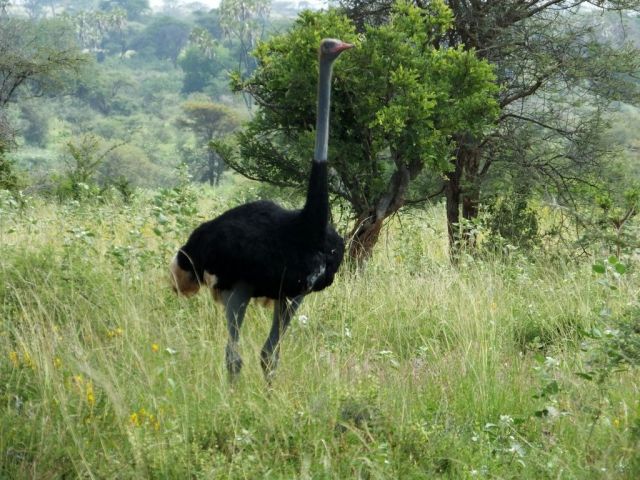




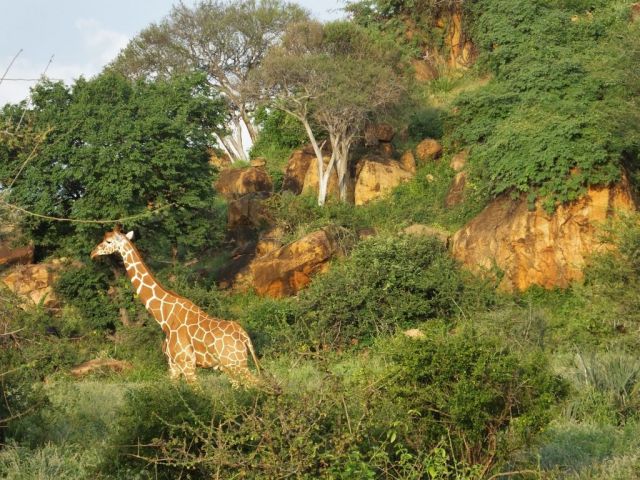
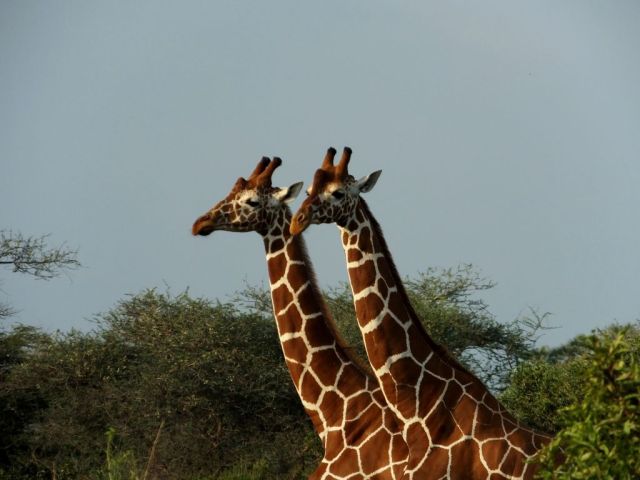
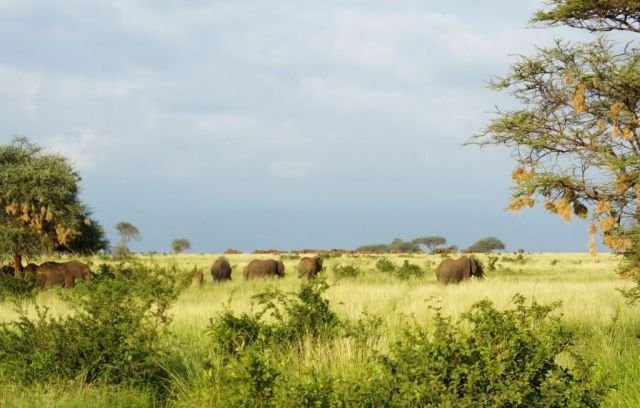

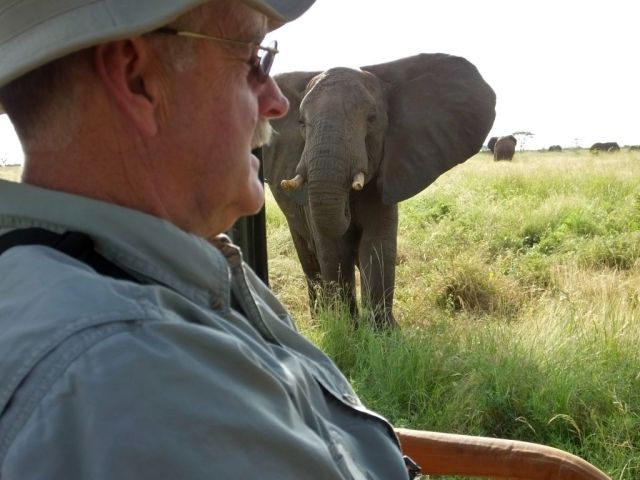

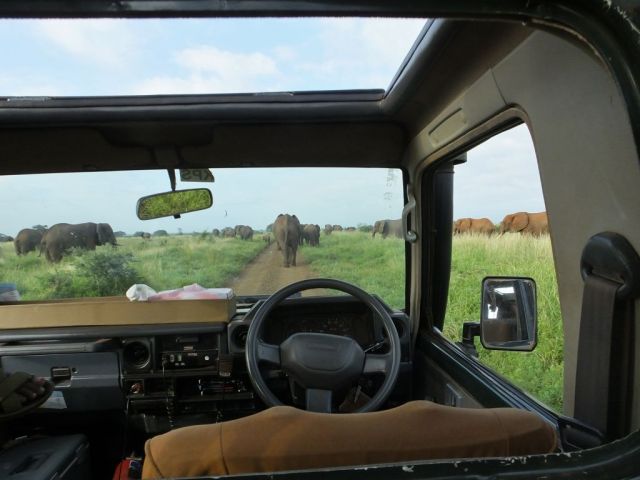





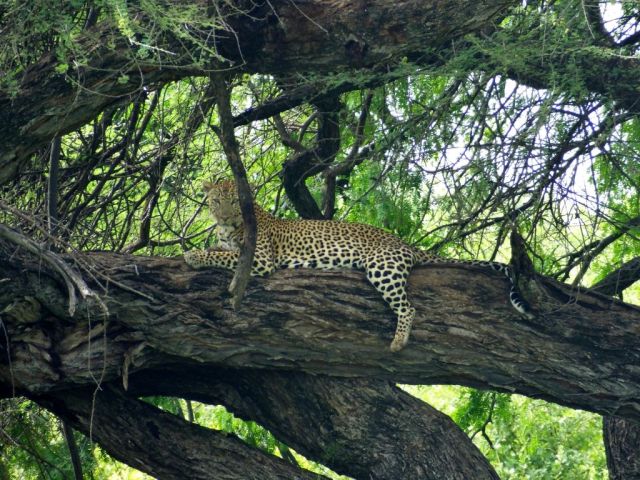

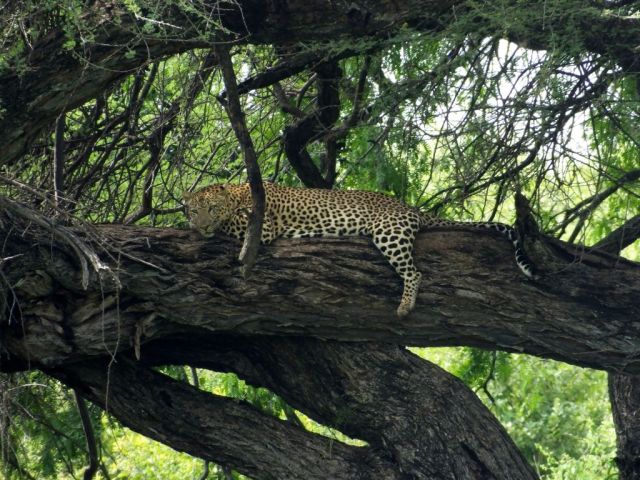
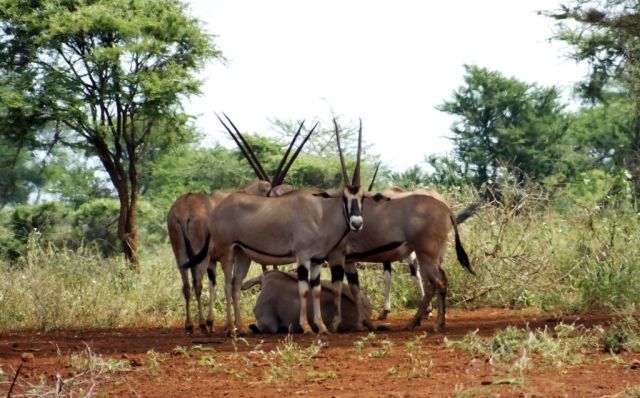
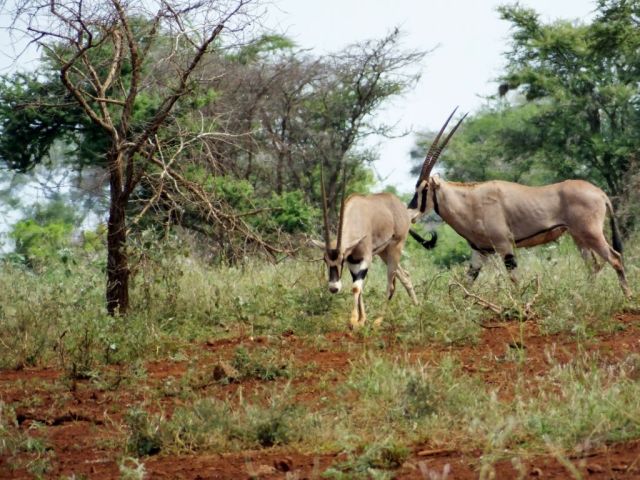


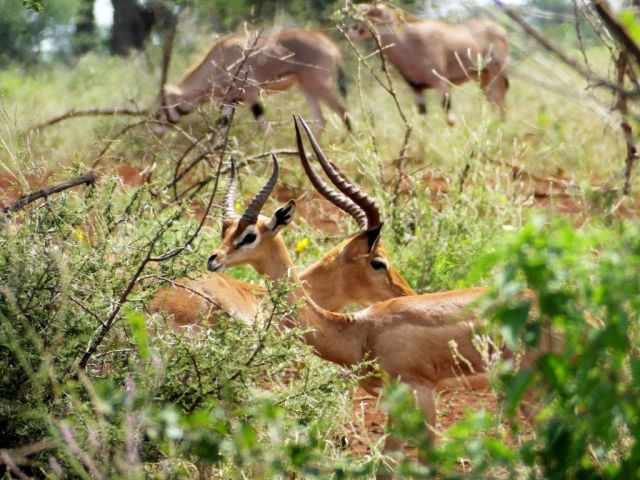
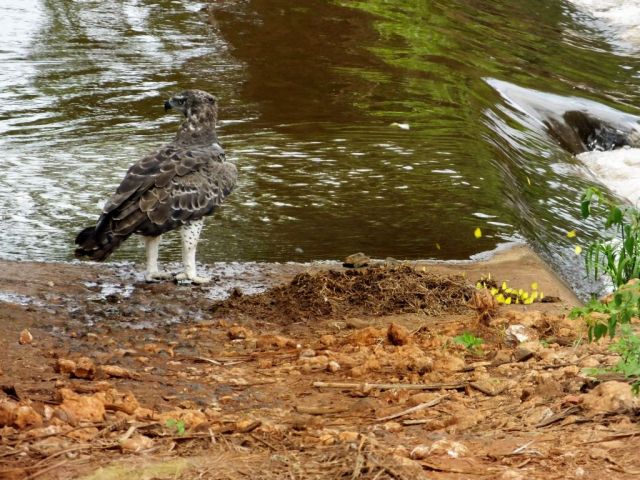
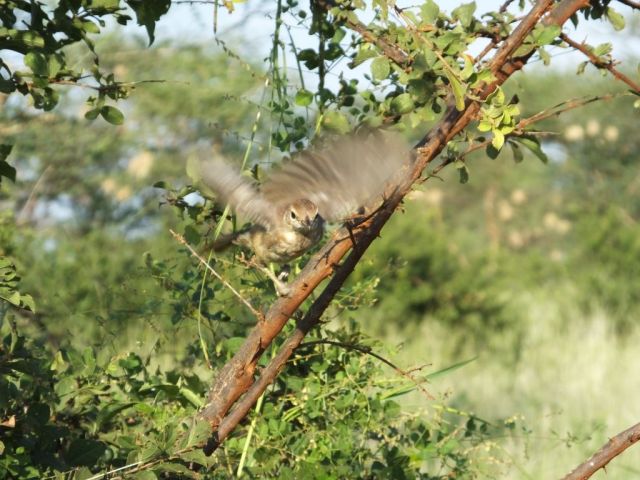
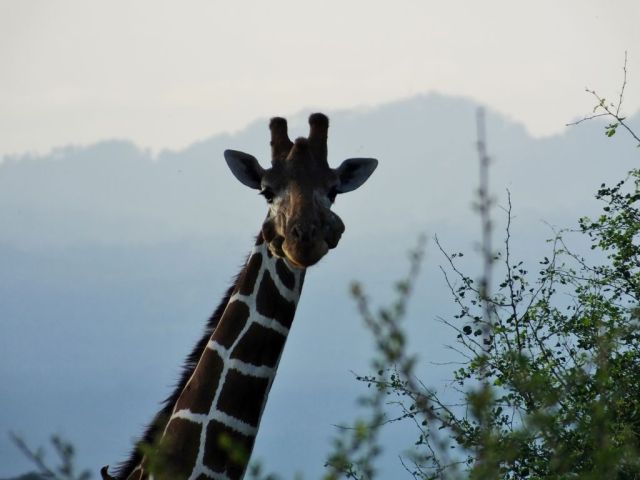

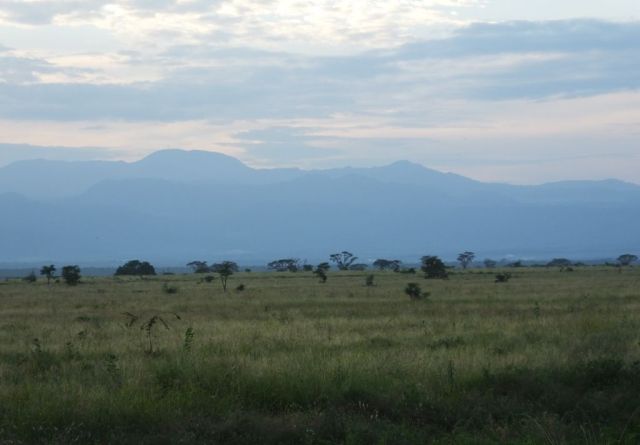




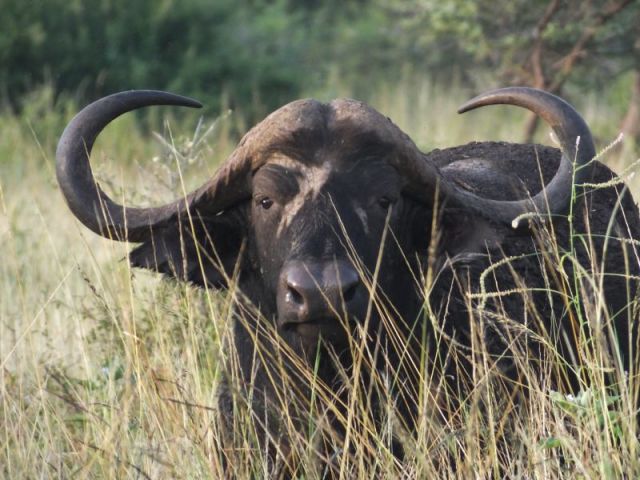

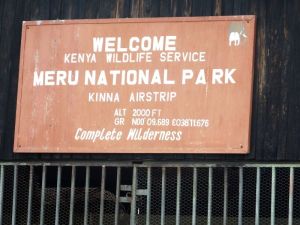 After an hour or so in the air our plane touches down on a dirt airstrip and taxis to a halt. Paul and I are the only passengers to exit the plane along with the pilot and copilot. The pilot retrieves our suitcase from the cargo hold and hands it over to us. There is no vehicle waiting alongside the “tarmac” so the young woman who is the copilot walks over with us to a shoddy building where a lone employee is standing in the “office”. The man is very unfriendly, hardly acknowledging us, but he makes a phone call to the Offbeat Meru camp. After an exchange between the co-pilot and the grumpy guy, the pretty young lady says that someone from Offbeat will be here in a few minutes and says this man will stay with us until our ride arrives. We nod in agreement and the plane is soon lifting off the ground to fade away in the distance.
After an hour or so in the air our plane touches down on a dirt airstrip and taxis to a halt. Paul and I are the only passengers to exit the plane along with the pilot and copilot. The pilot retrieves our suitcase from the cargo hold and hands it over to us. There is no vehicle waiting alongside the “tarmac” so the young woman who is the copilot walks over with us to a shoddy building where a lone employee is standing in the “office”. The man is very unfriendly, hardly acknowledging us, but he makes a phone call to the Offbeat Meru camp. After an exchange between the co-pilot and the grumpy guy, the pretty young lady says that someone from Offbeat will be here in a few minutes and says this man will stay with us until our ride arrives. We nod in agreement and the plane is soon lifting off the ground to fade away in the distance.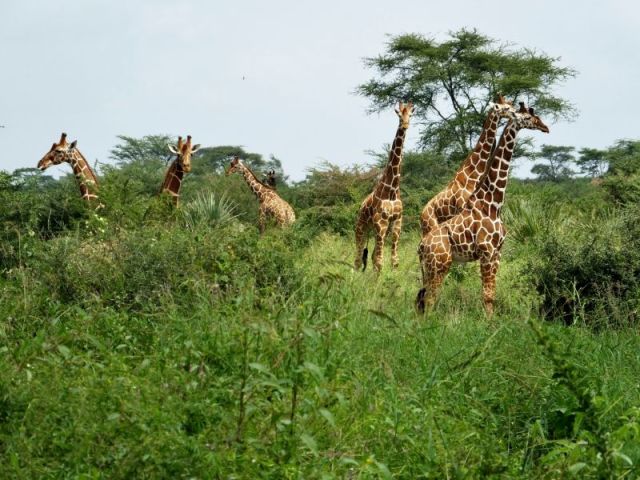
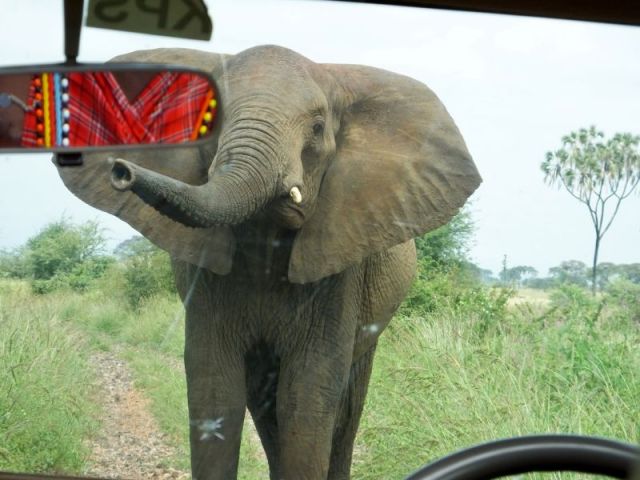
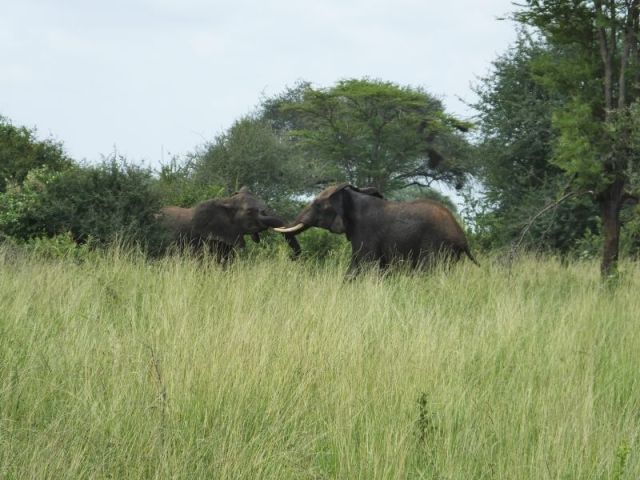

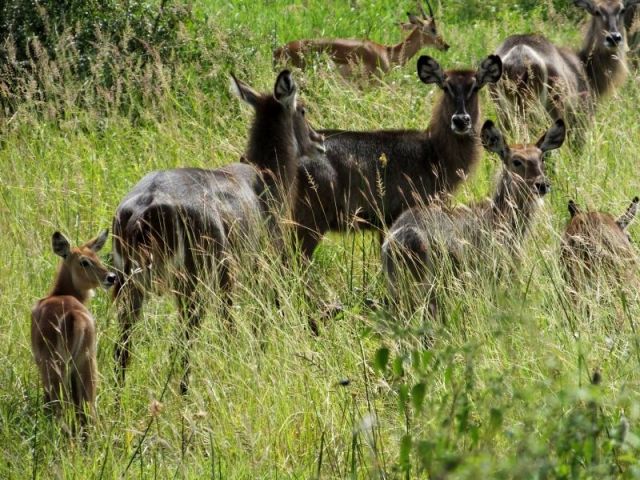



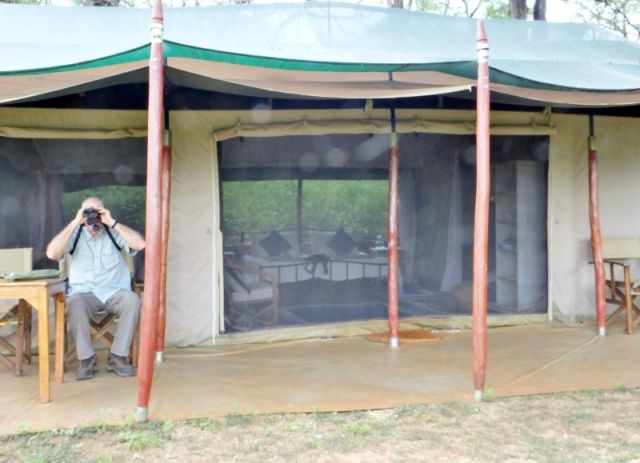
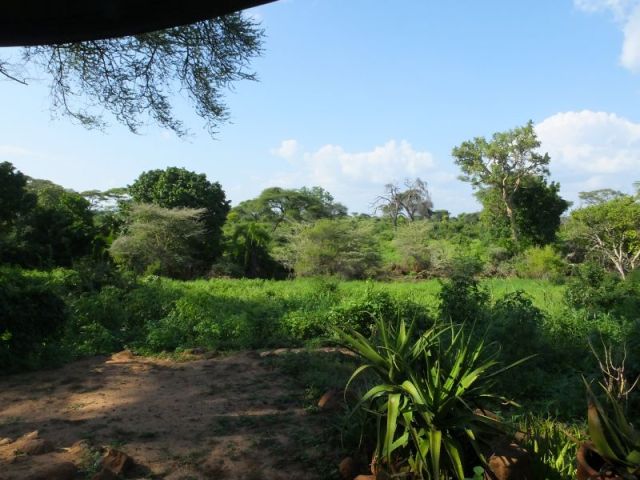
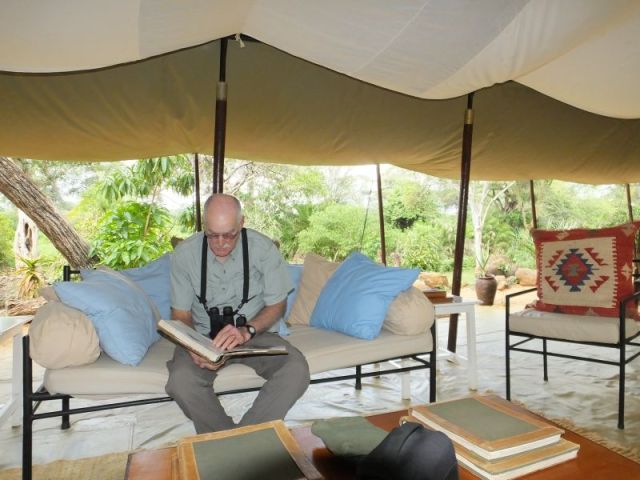

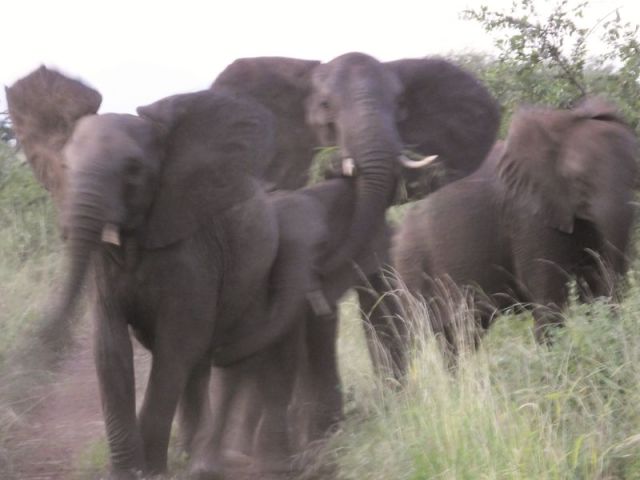
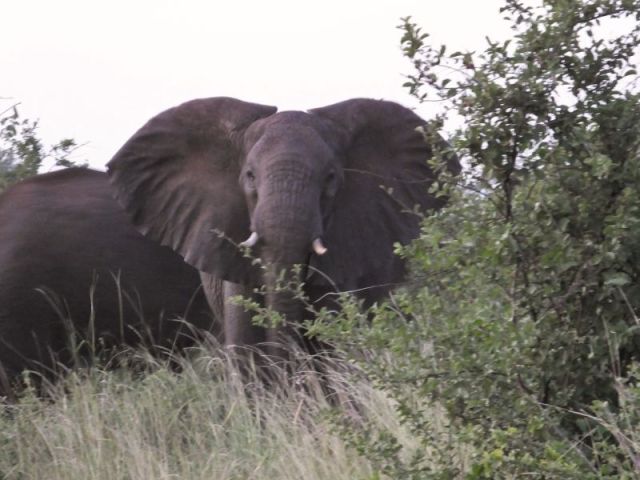
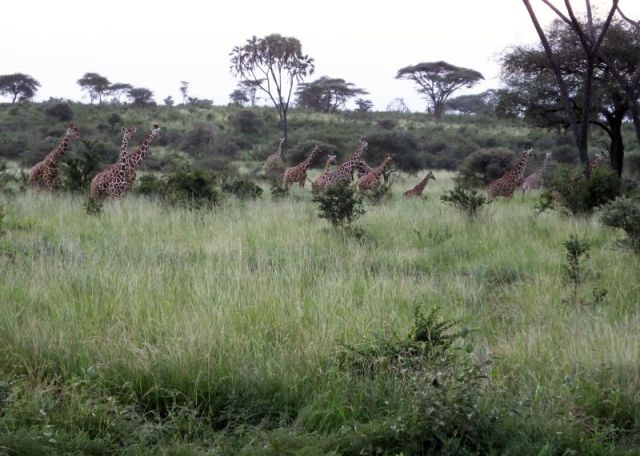
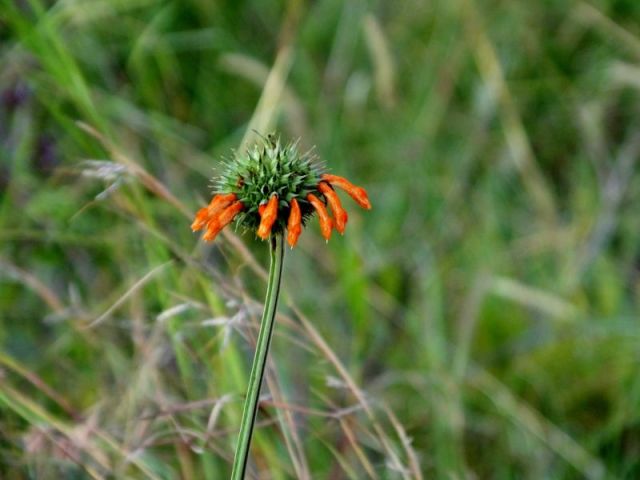


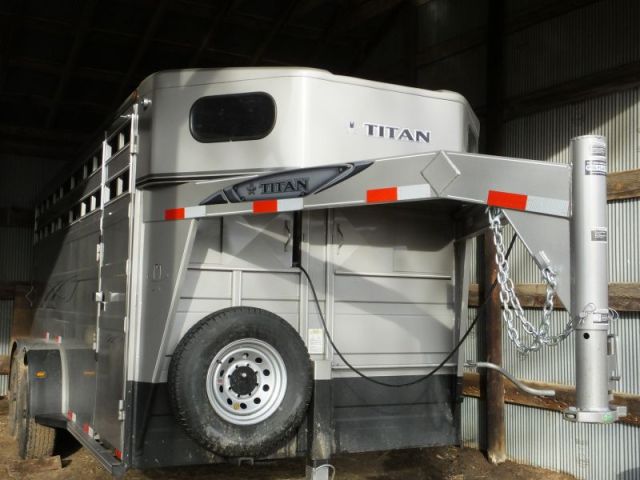
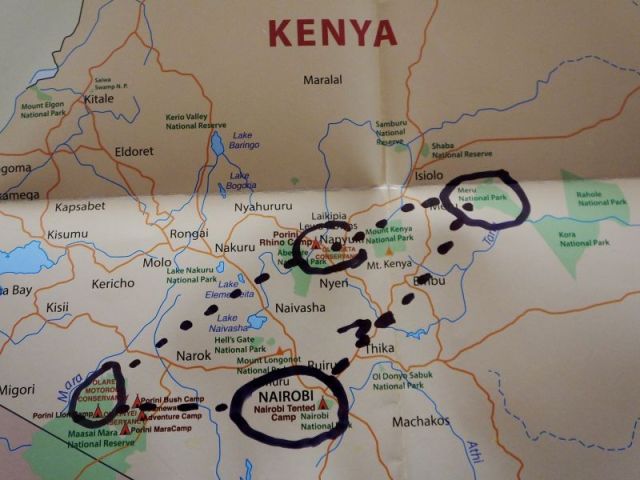
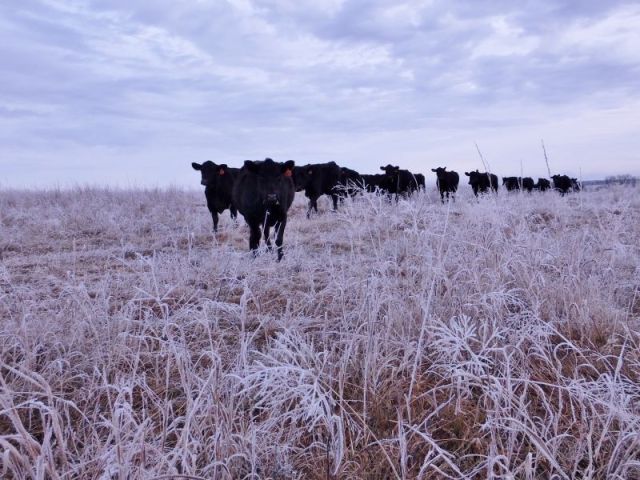

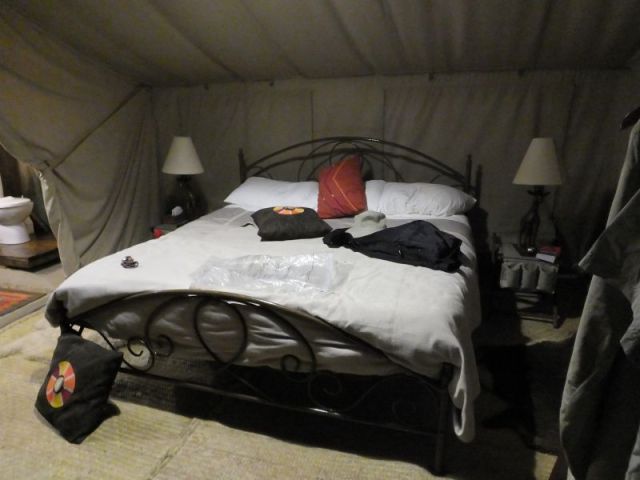
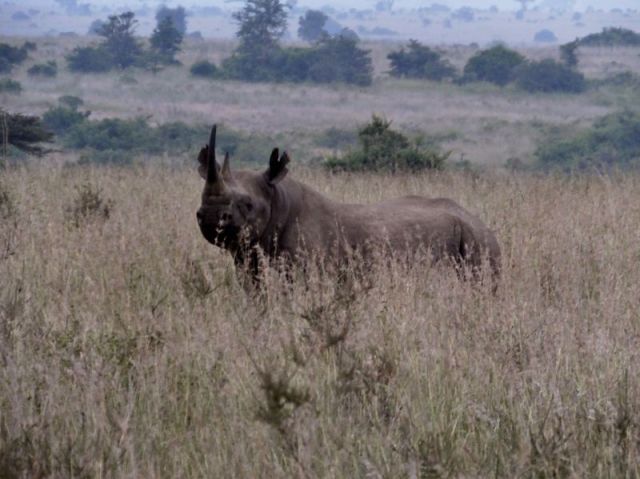



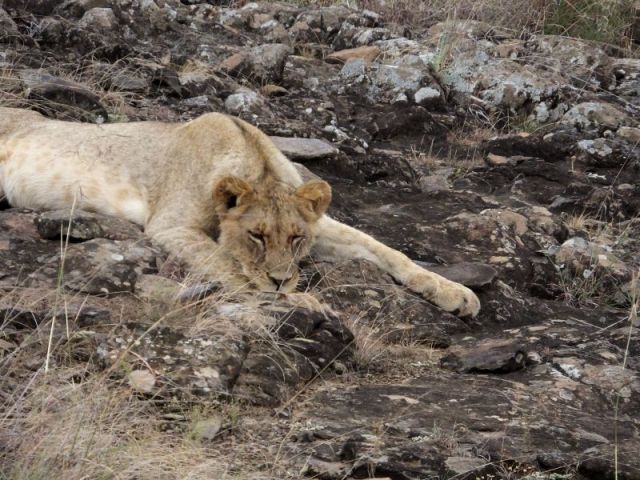

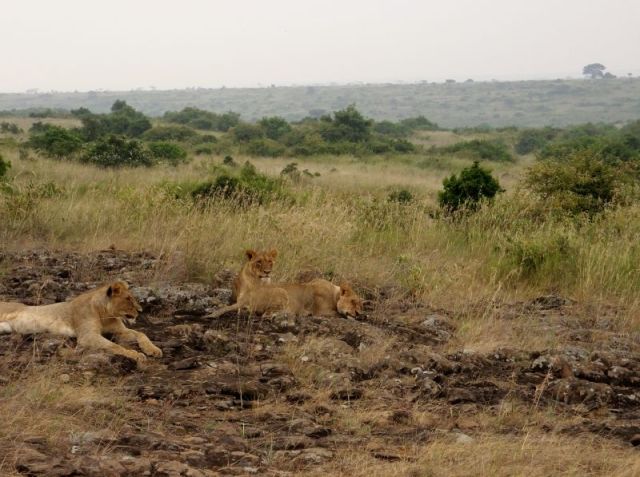


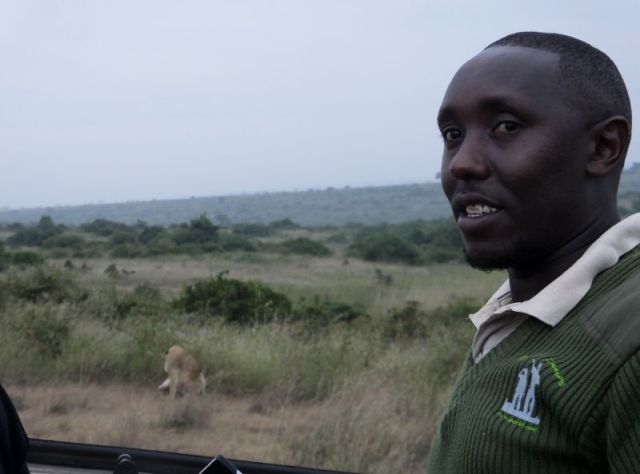
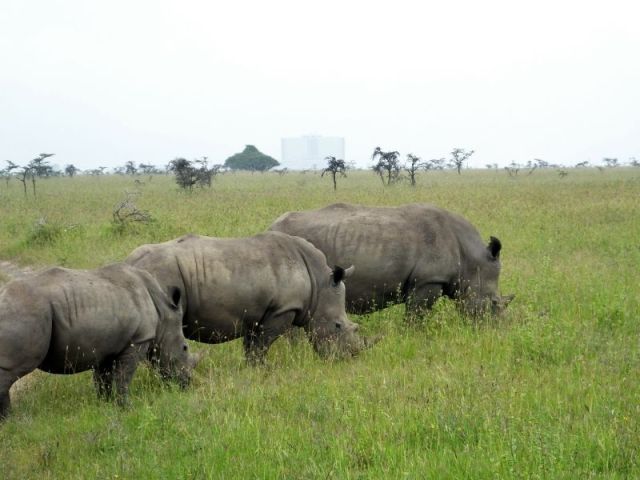
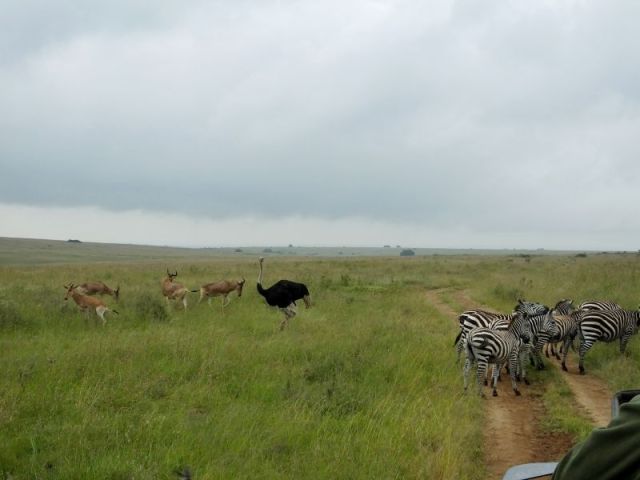
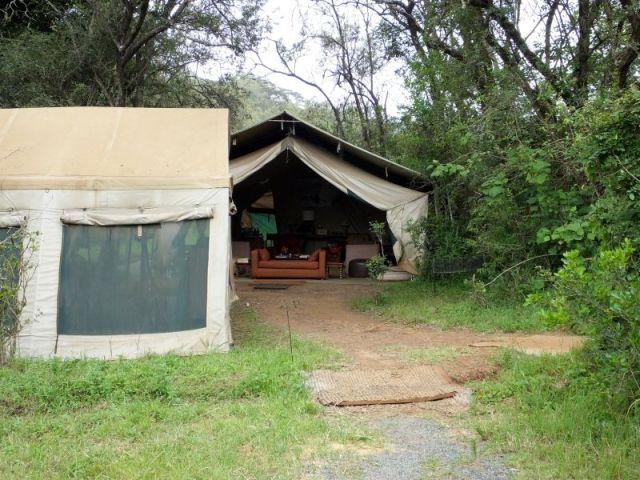
 We arrive at the orphanage just before eleven; ( it is located within the park), along with a myriad of other visitors from tourists to native Kenyans, which includes lots of families. Everyone lines up to wait for the gates to open and we file in, handing over the entry fee which I believe is the equivalent of five U.S. dollars. We visitors follow an employee and we walk through a cluster of buildings which I suppose are offices and housing for the help. Soon we arrive in an open area where a single rope cordons off a large circle where the baby elephants will soon make an appearance. In this elephant arena is a couple of man-made water holes, freshly cut tree branches, a soccer ball, and a wheelbarrow piled high with milk bottles.
We arrive at the orphanage just before eleven; ( it is located within the park), along with a myriad of other visitors from tourists to native Kenyans, which includes lots of families. Everyone lines up to wait for the gates to open and we file in, handing over the entry fee which I believe is the equivalent of five U.S. dollars. We visitors follow an employee and we walk through a cluster of buildings which I suppose are offices and housing for the help. Soon we arrive in an open area where a single rope cordons off a large circle where the baby elephants will soon make an appearance. In this elephant arena is a couple of man-made water holes, freshly cut tree branches, a soccer ball, and a wheelbarrow piled high with milk bottles.



